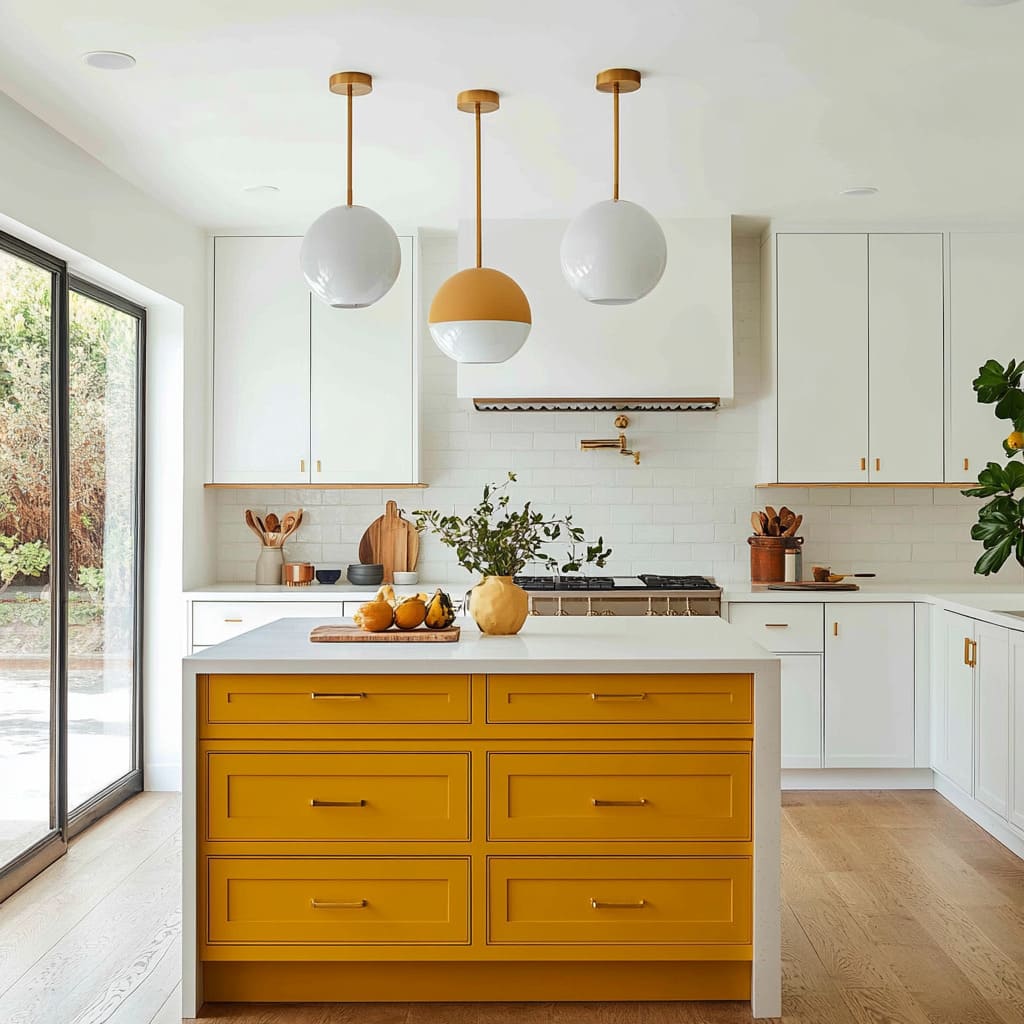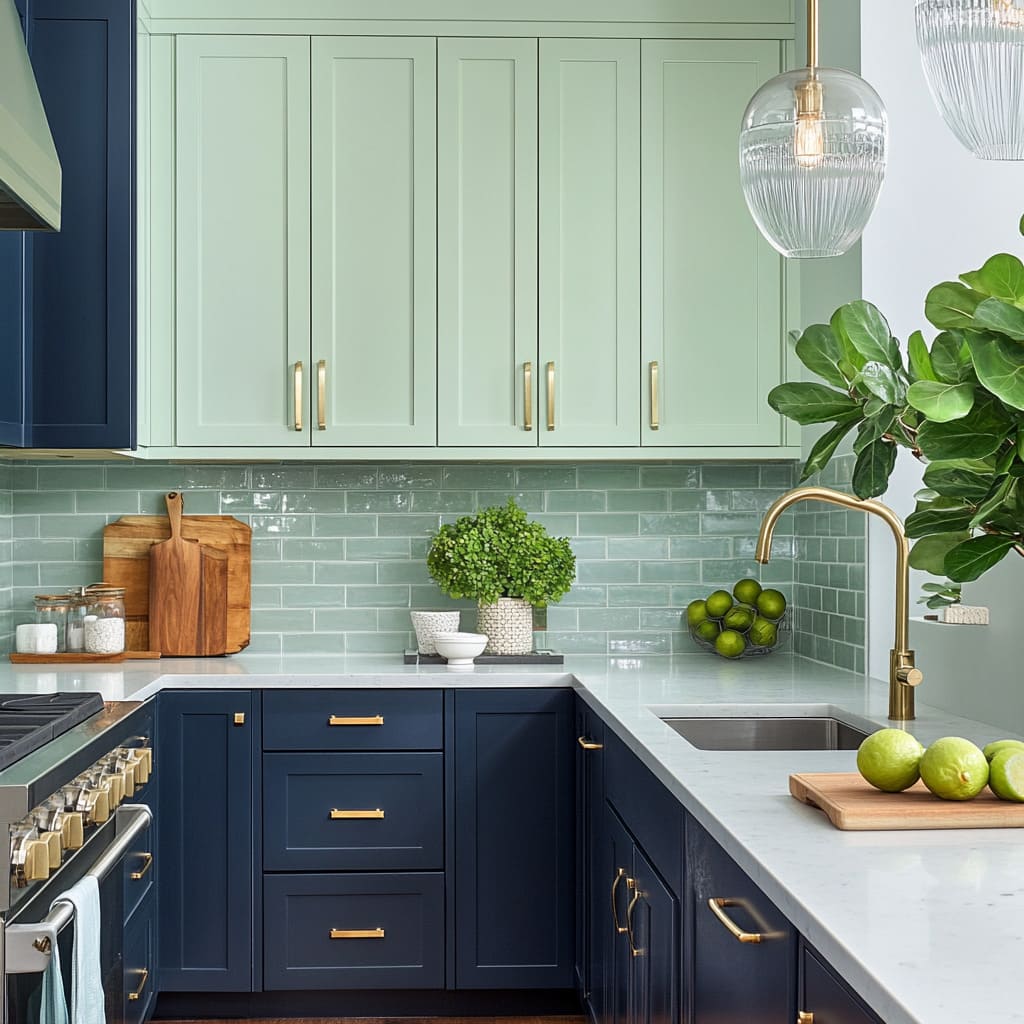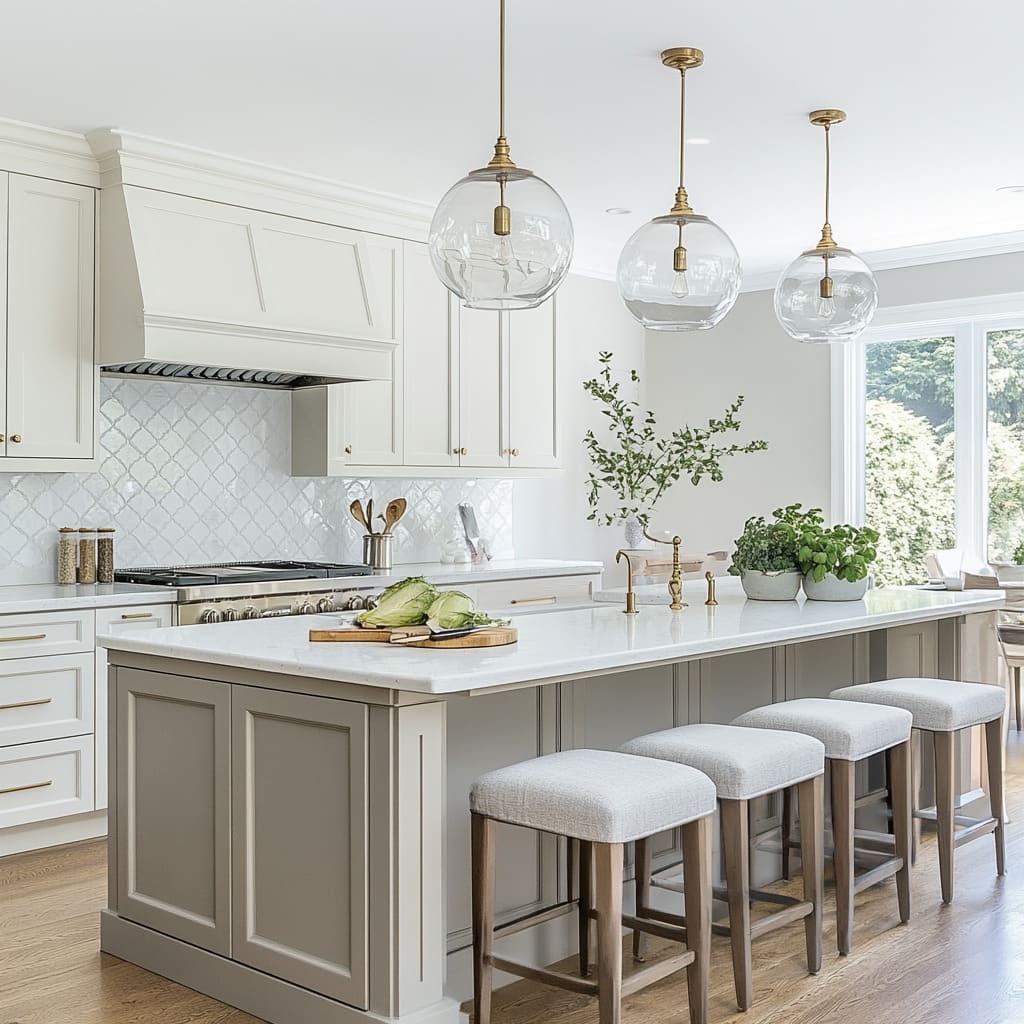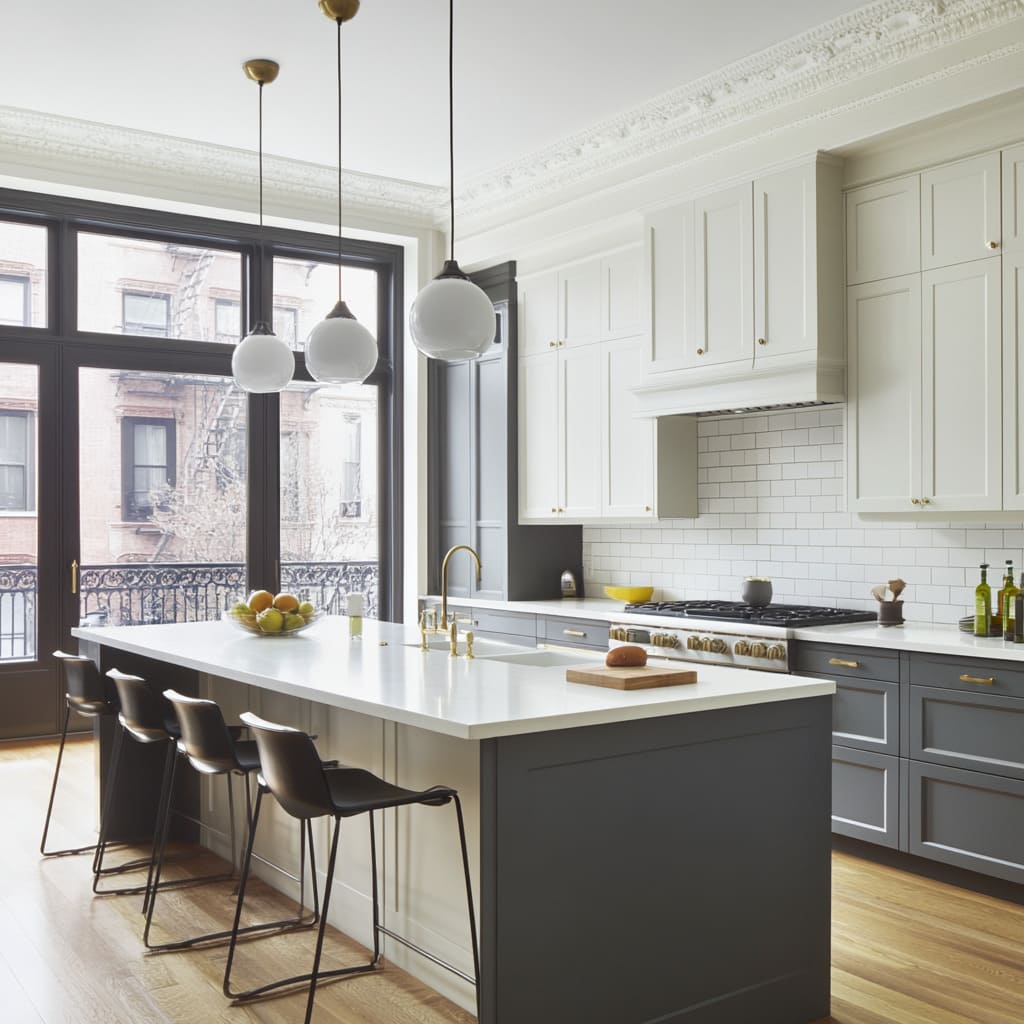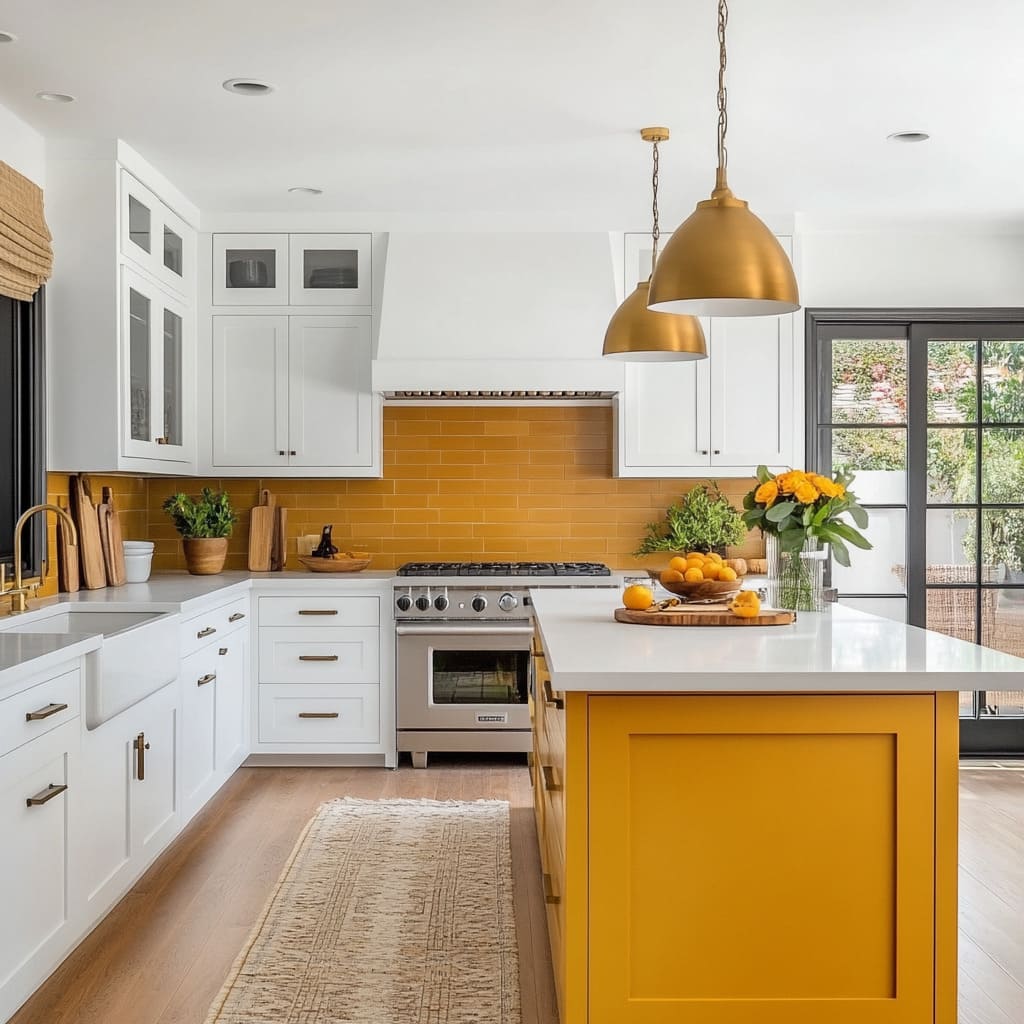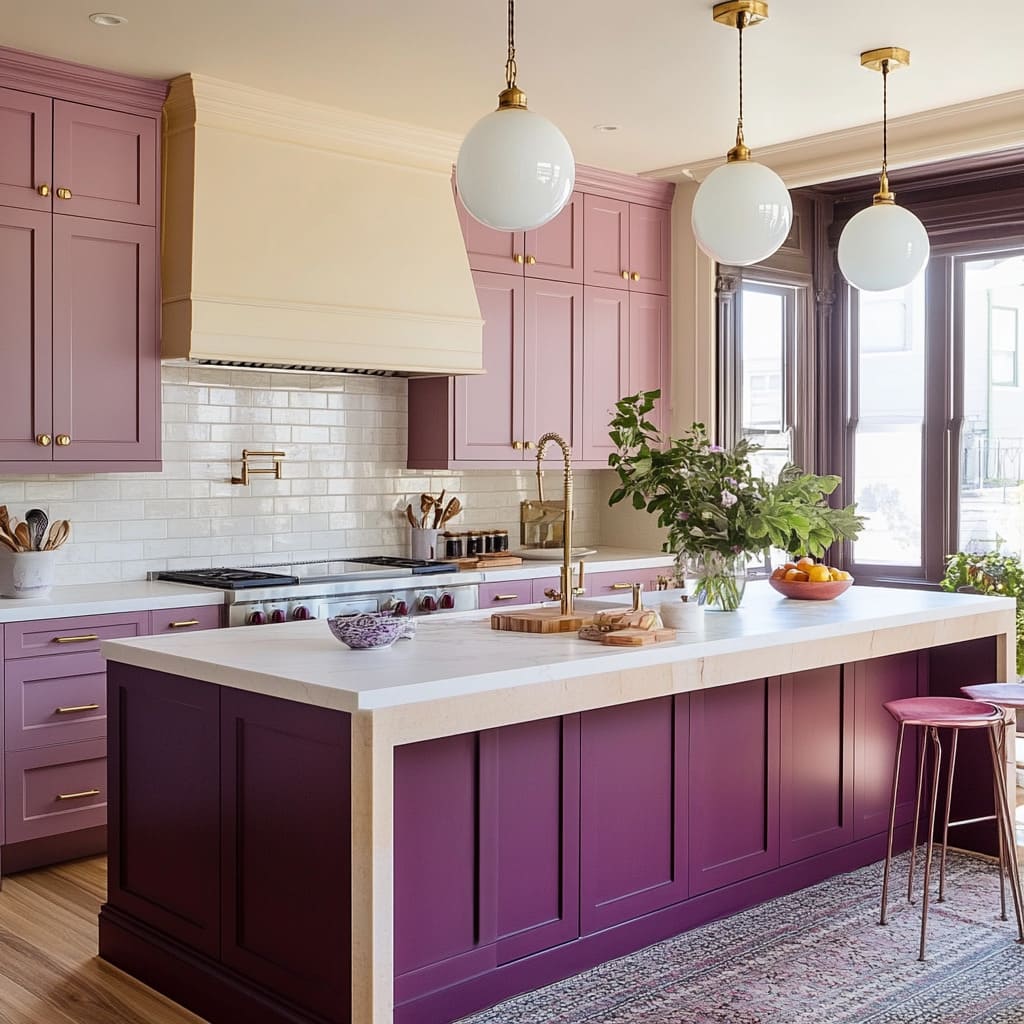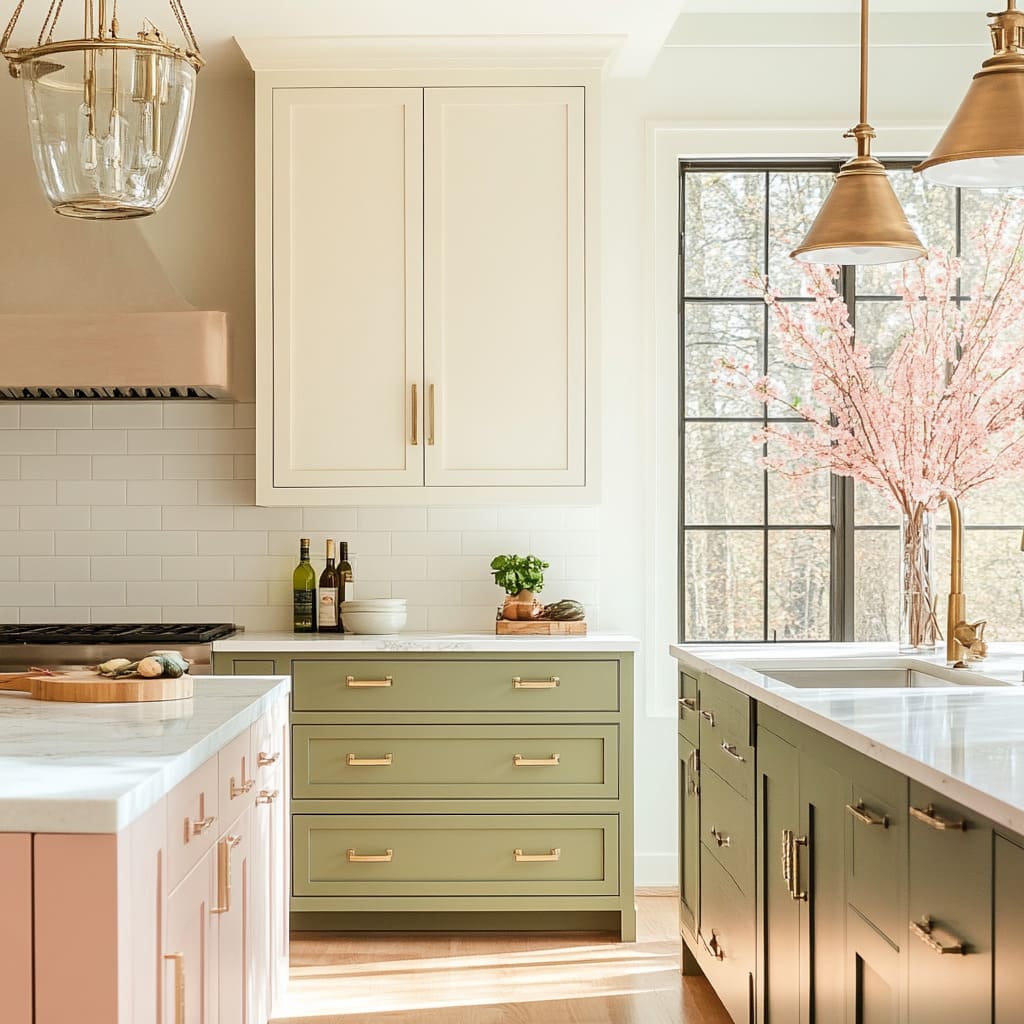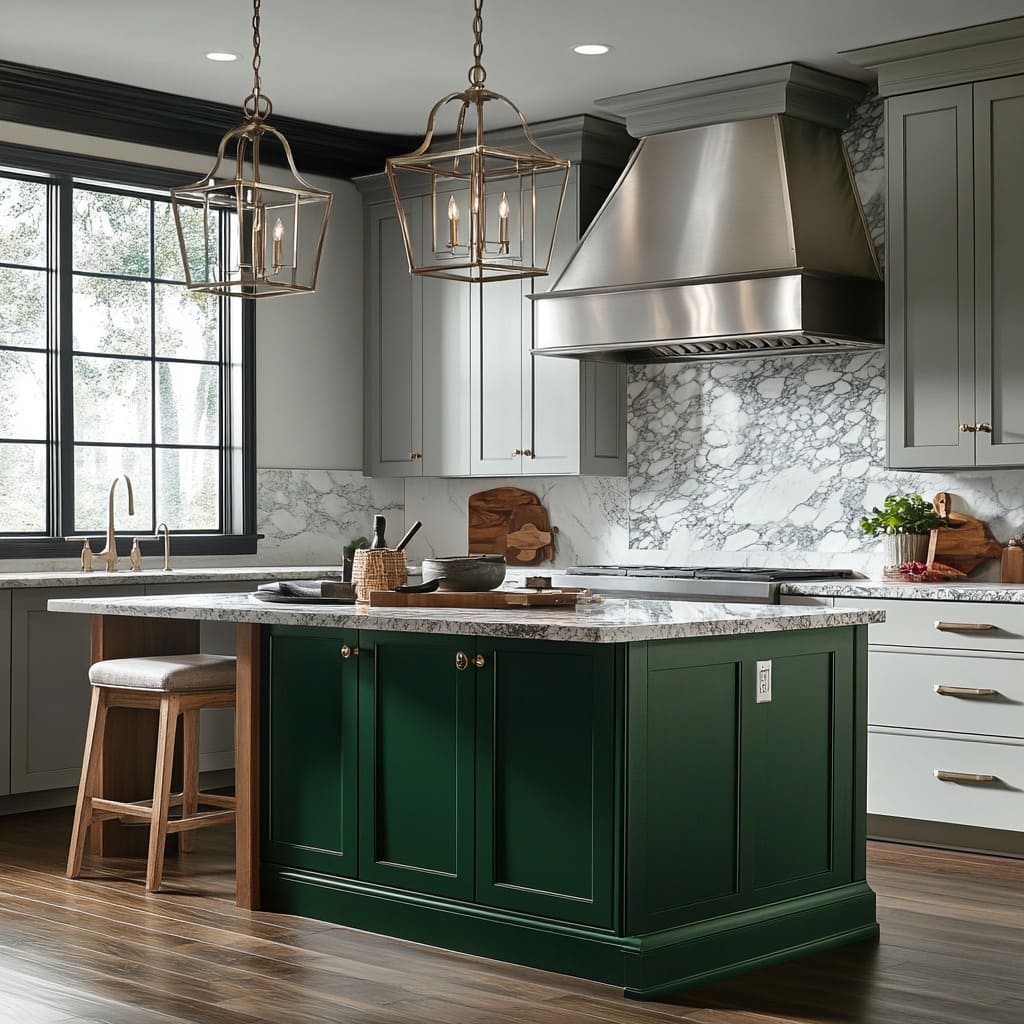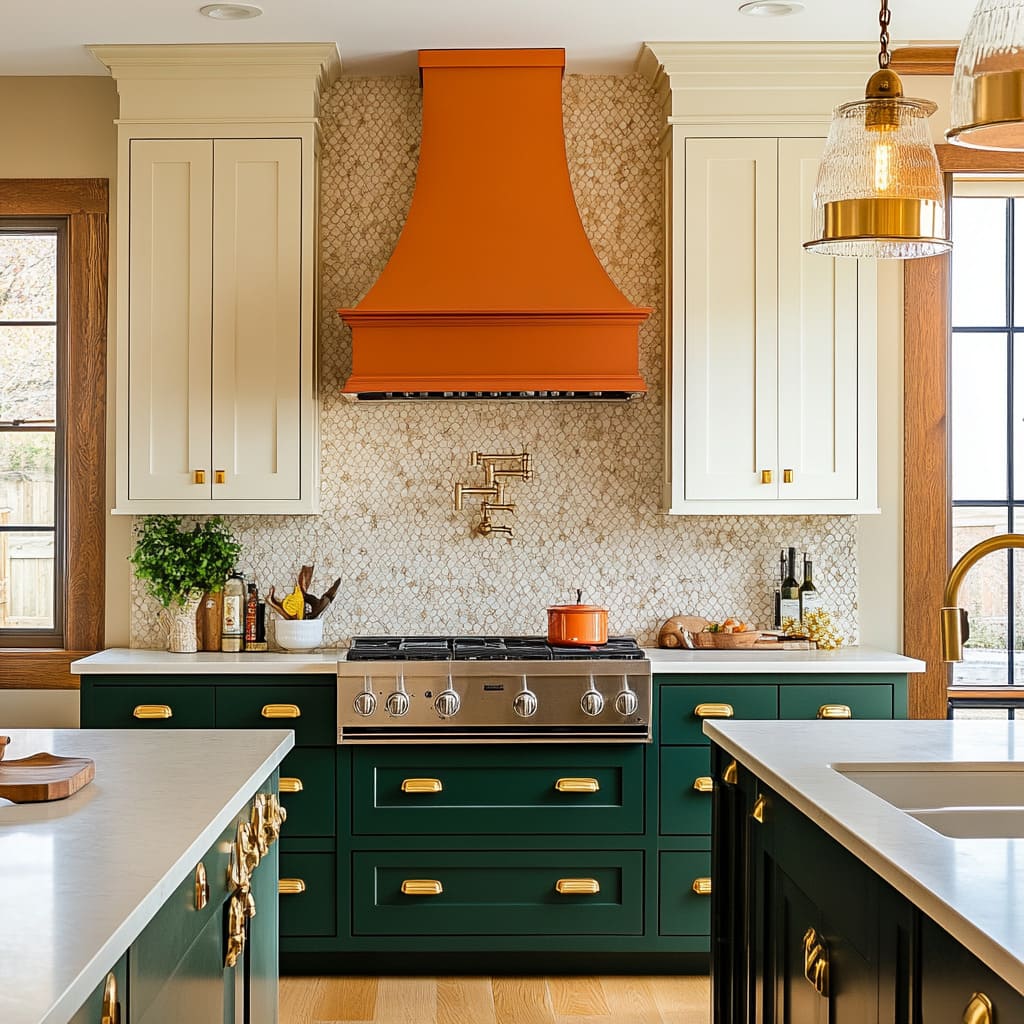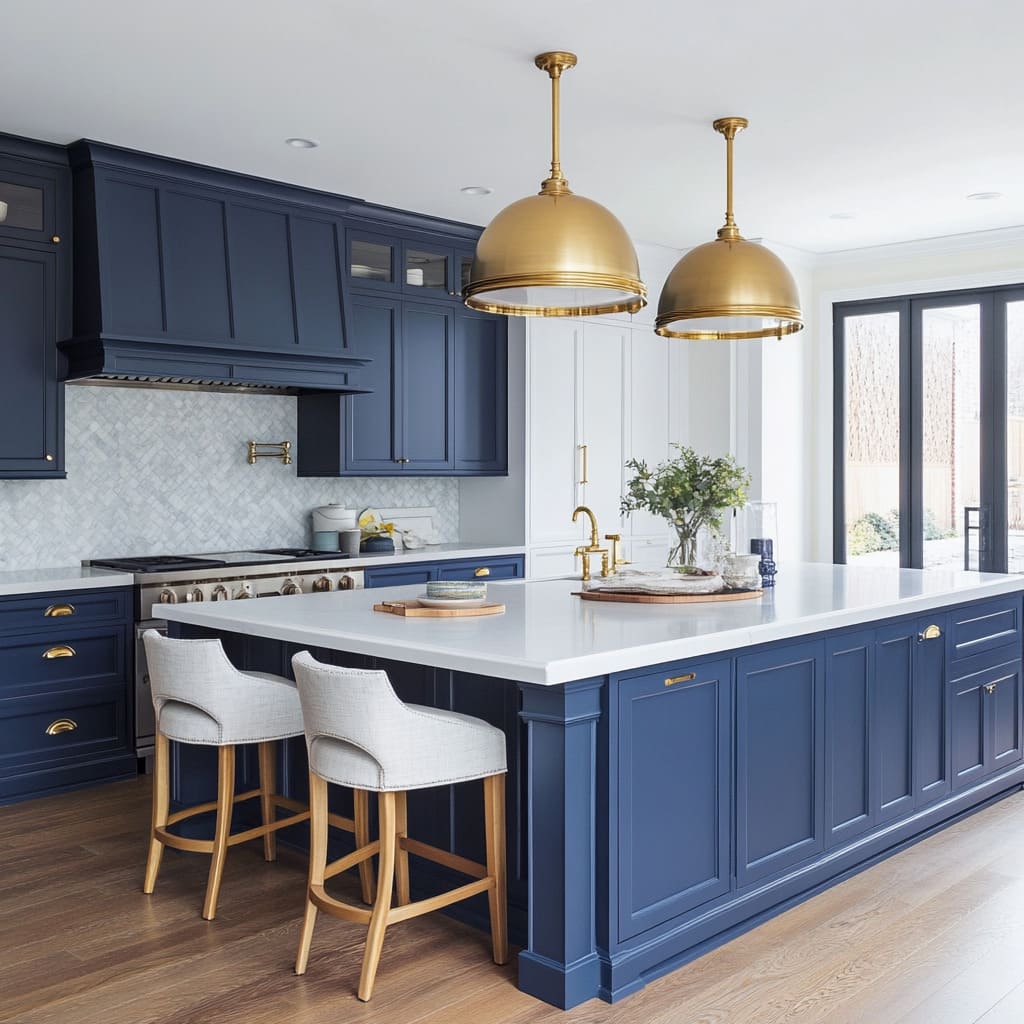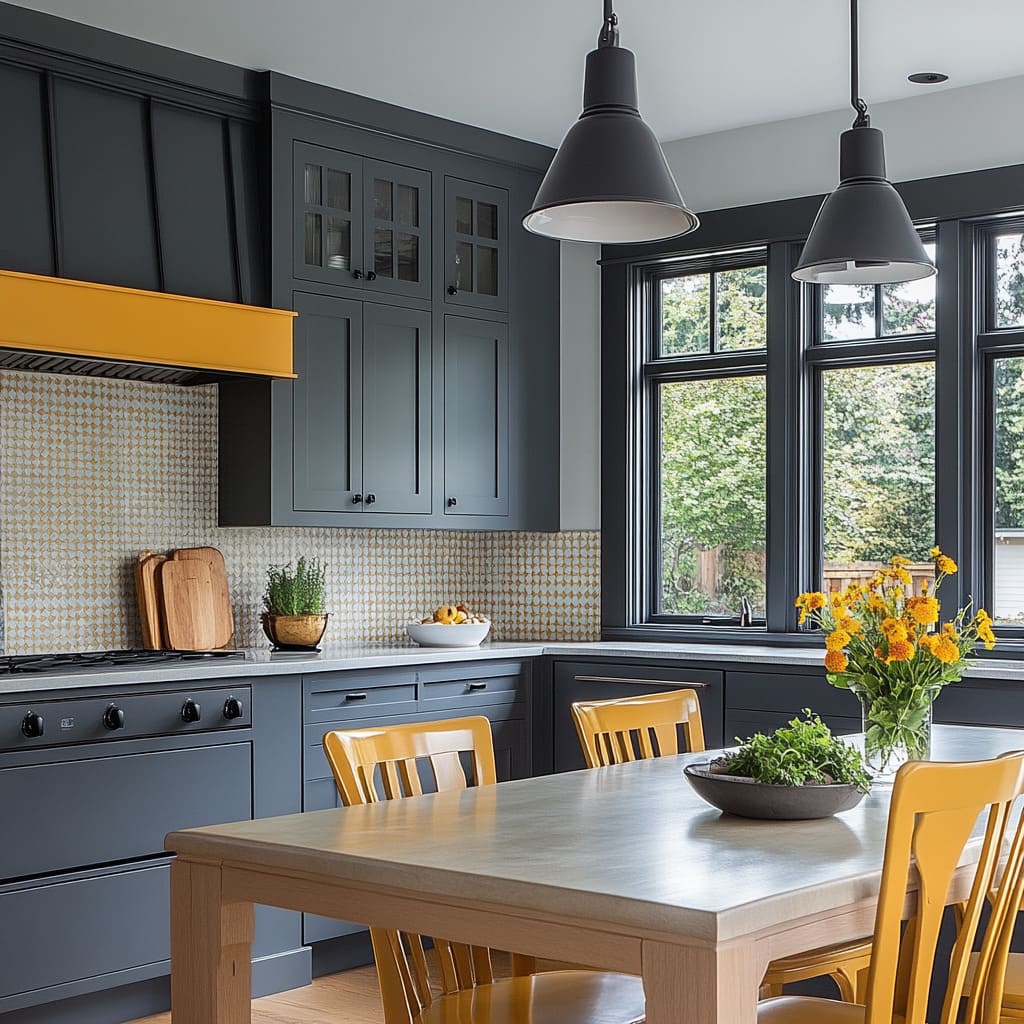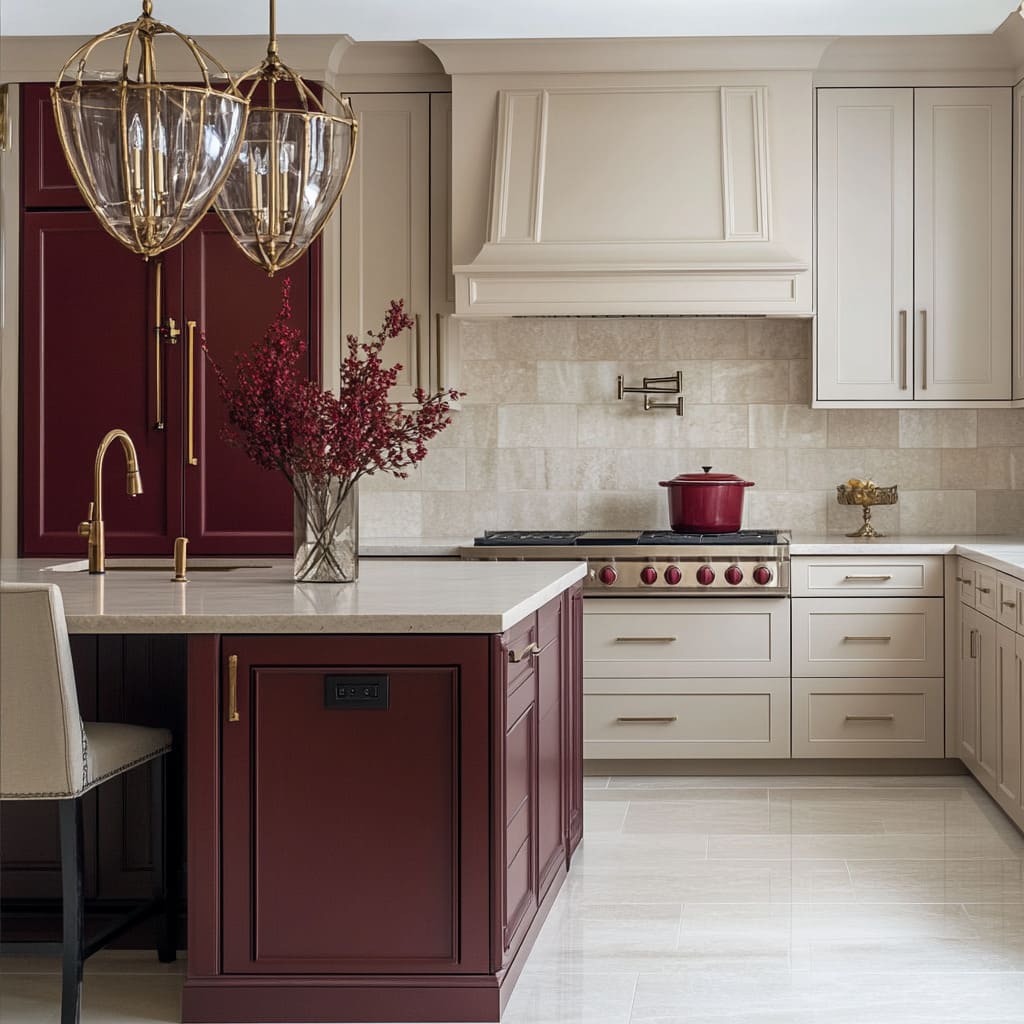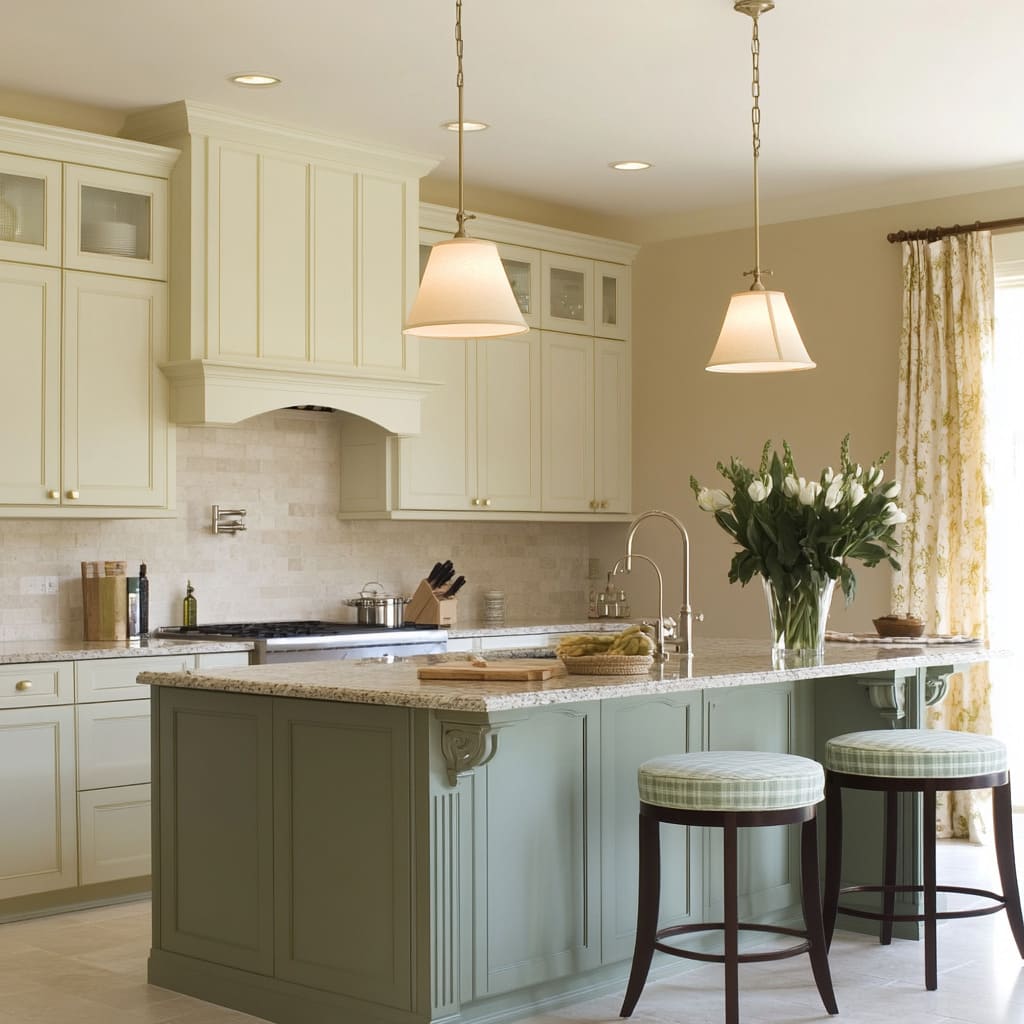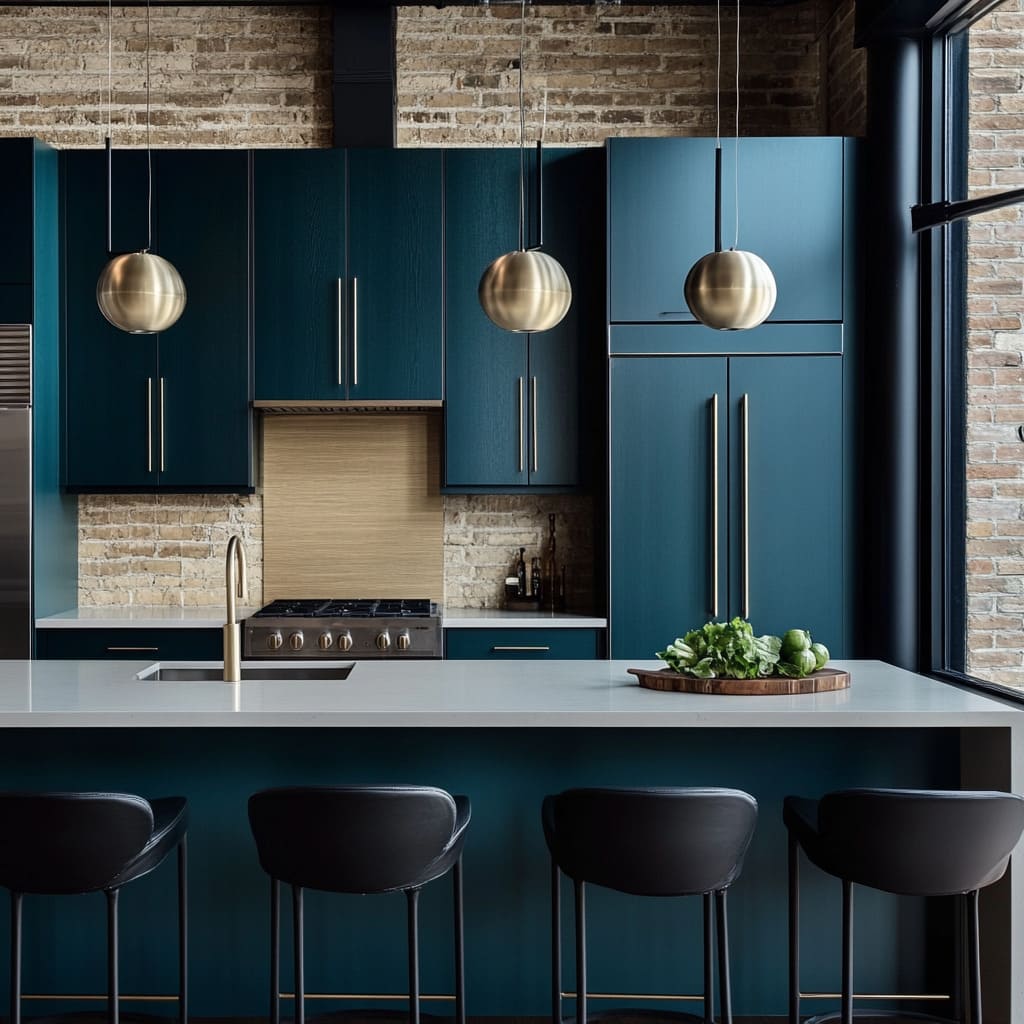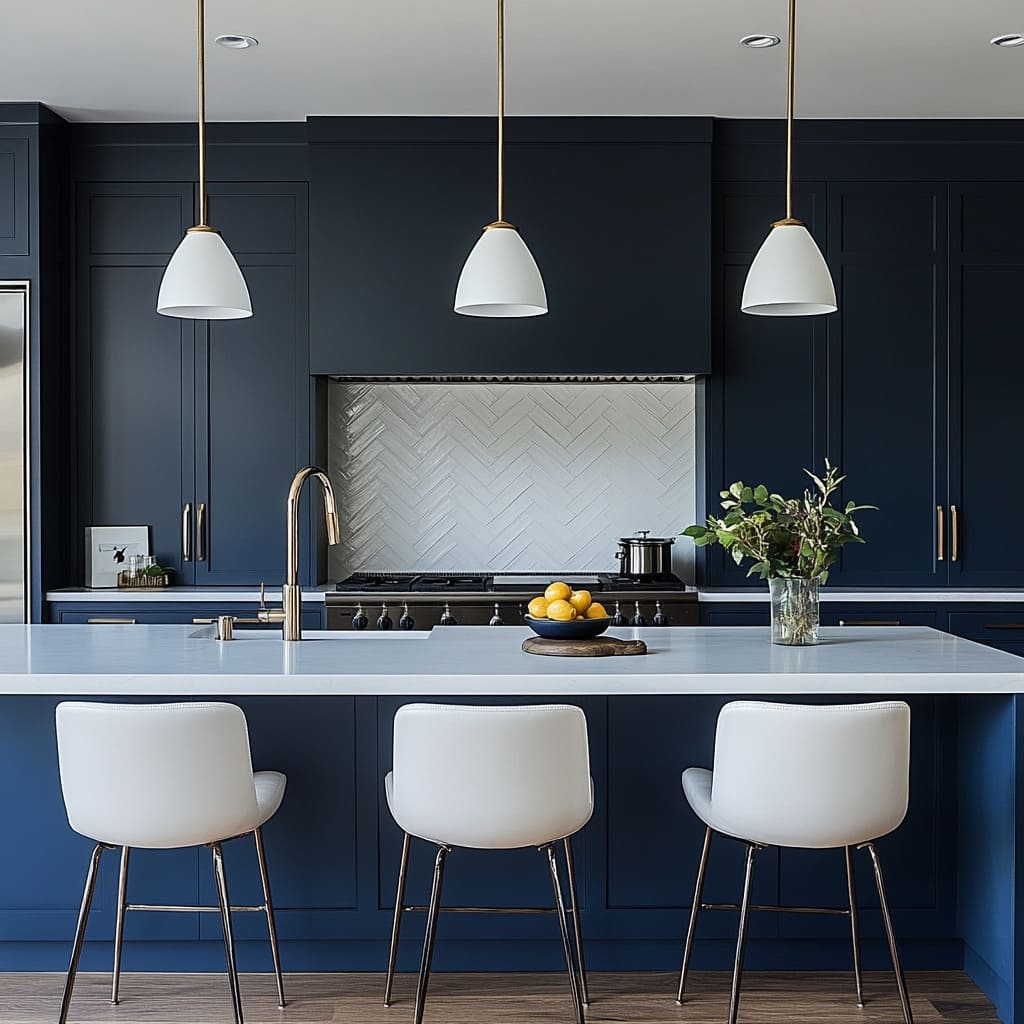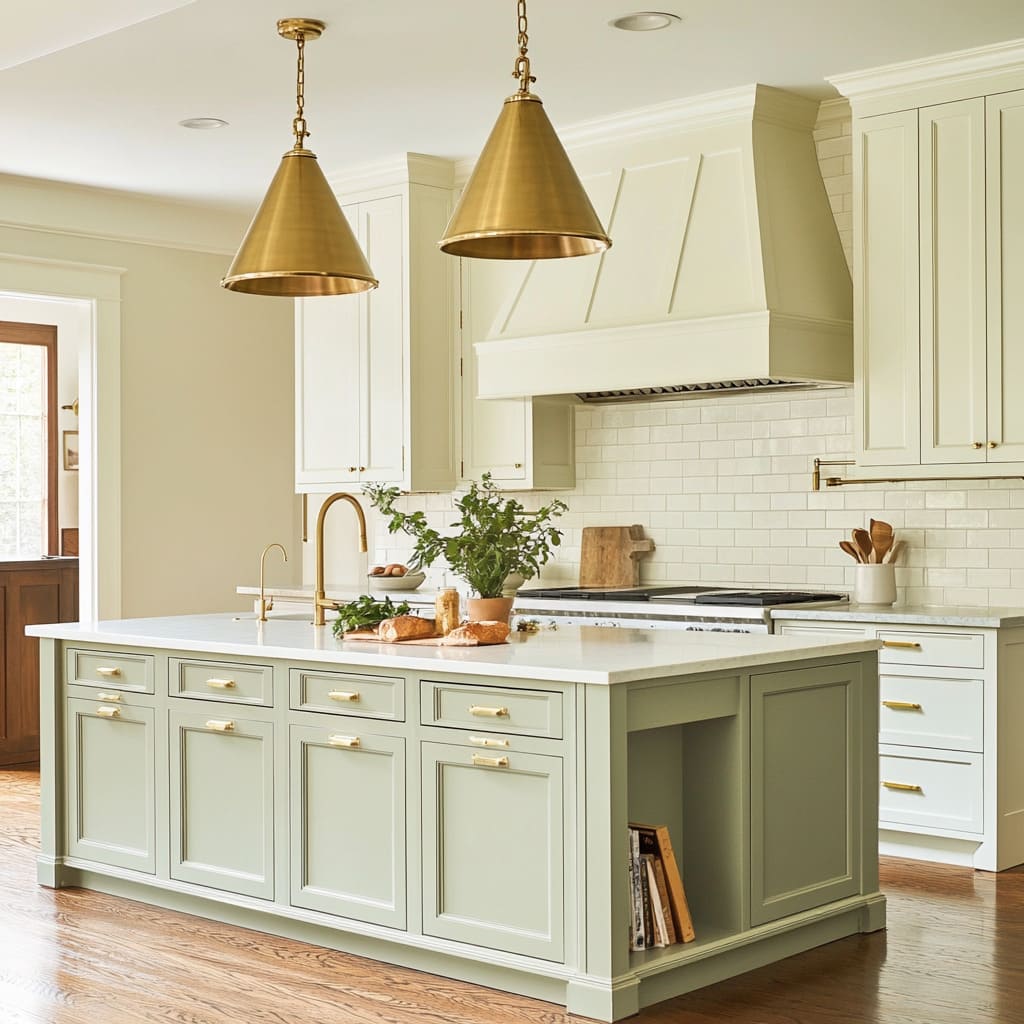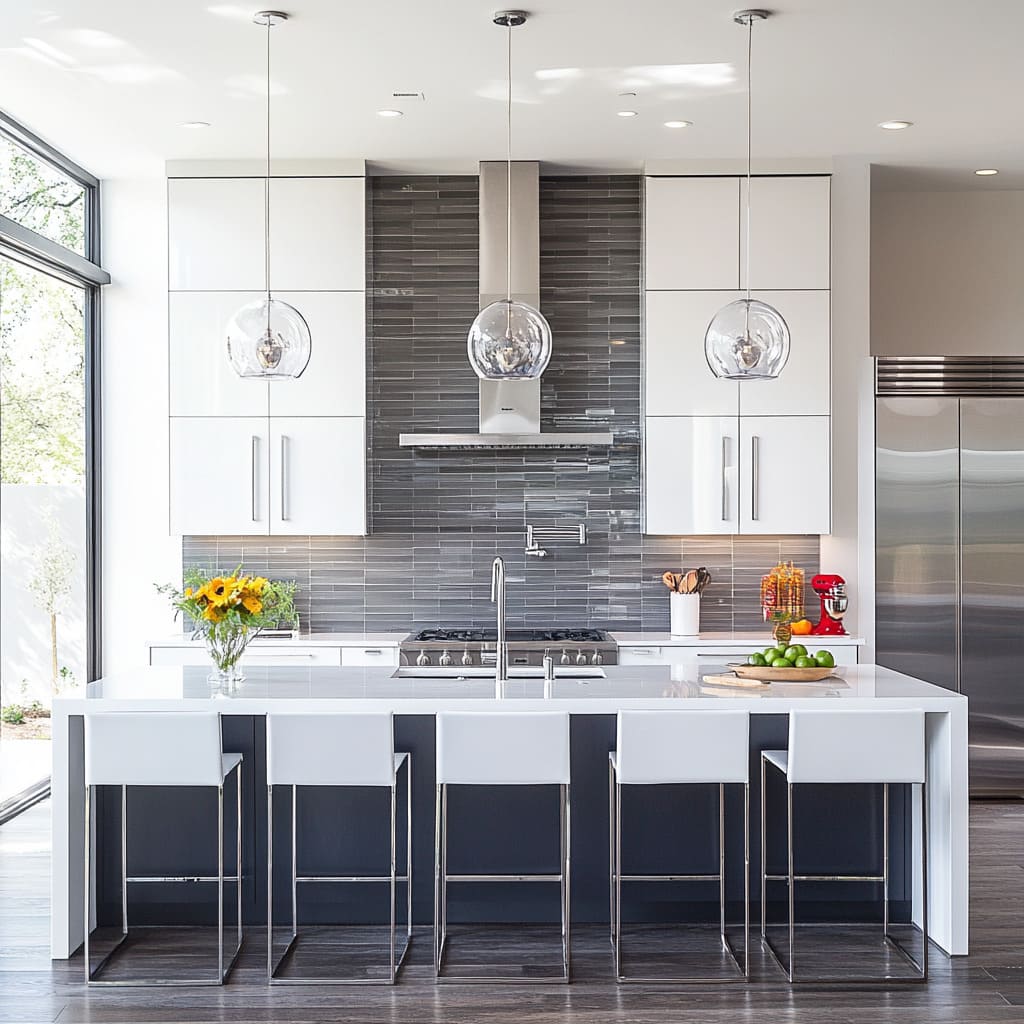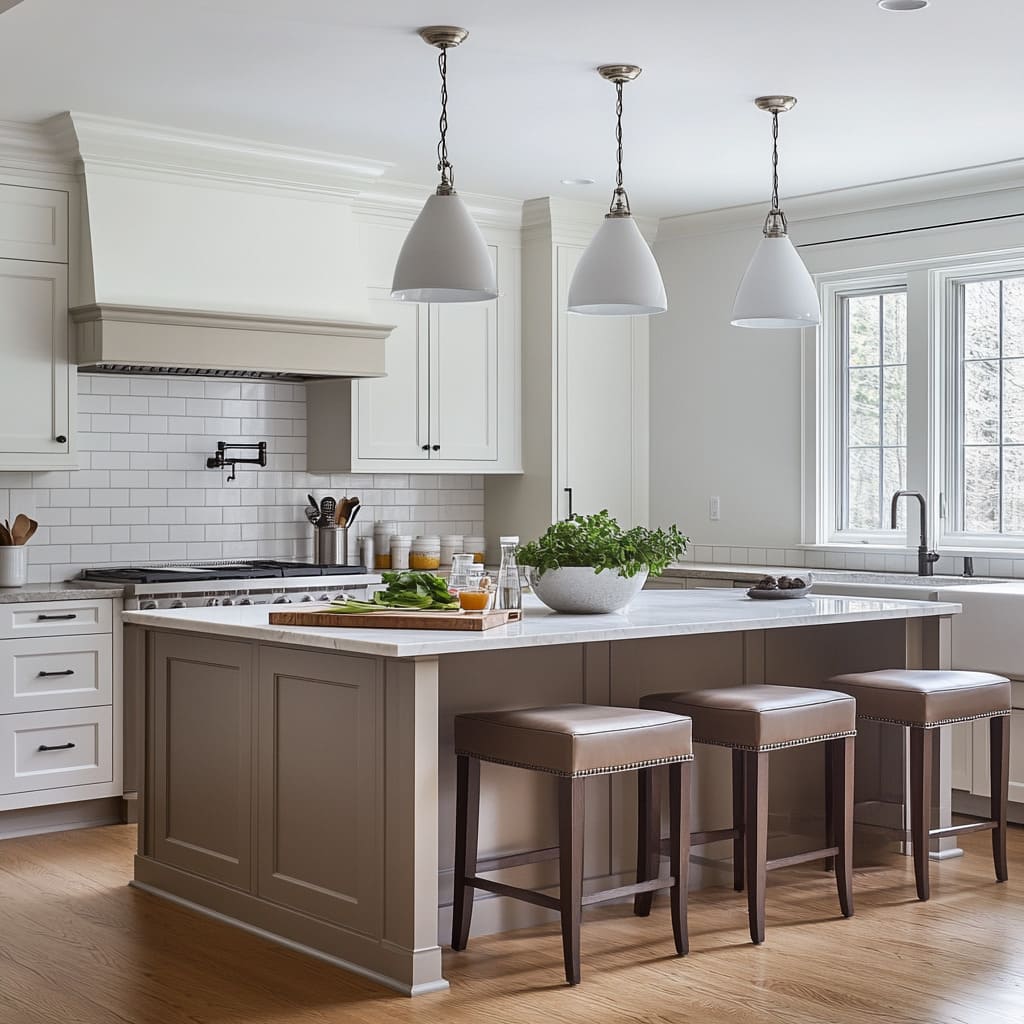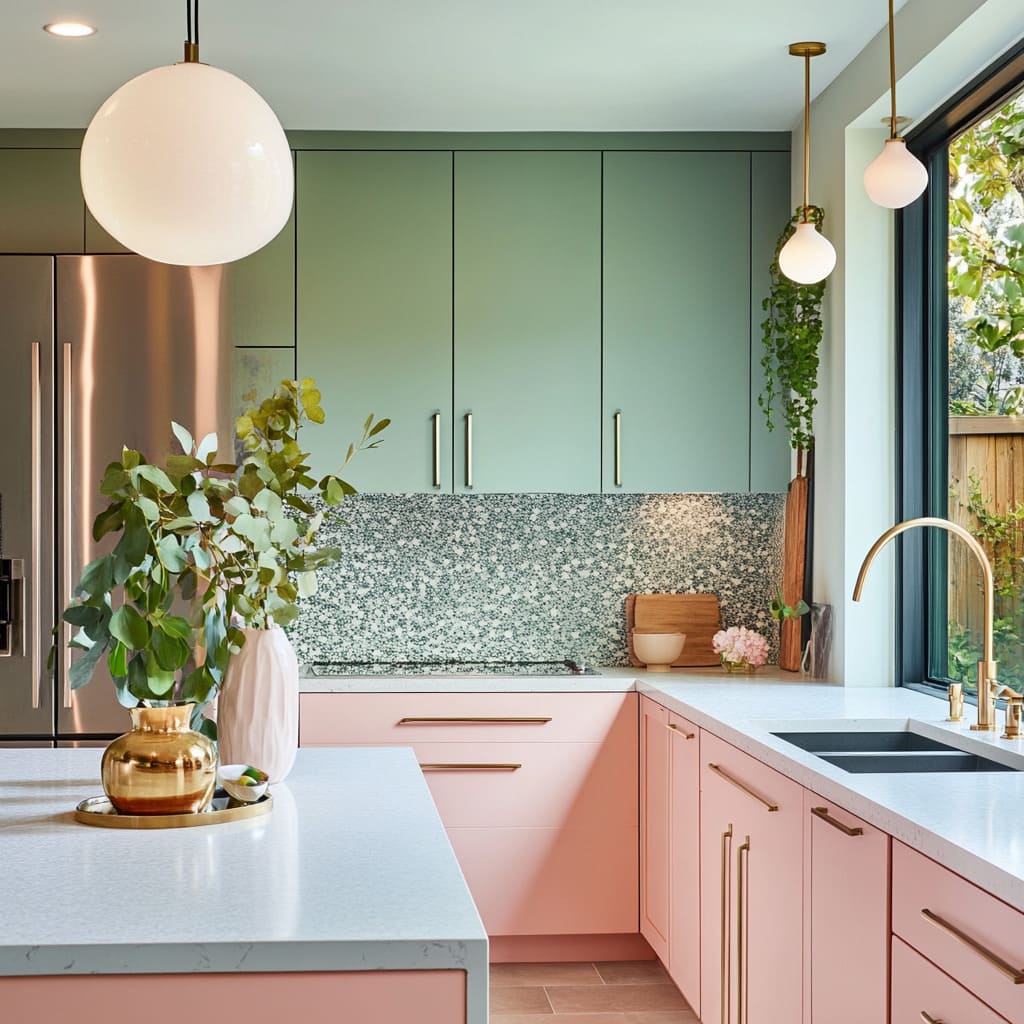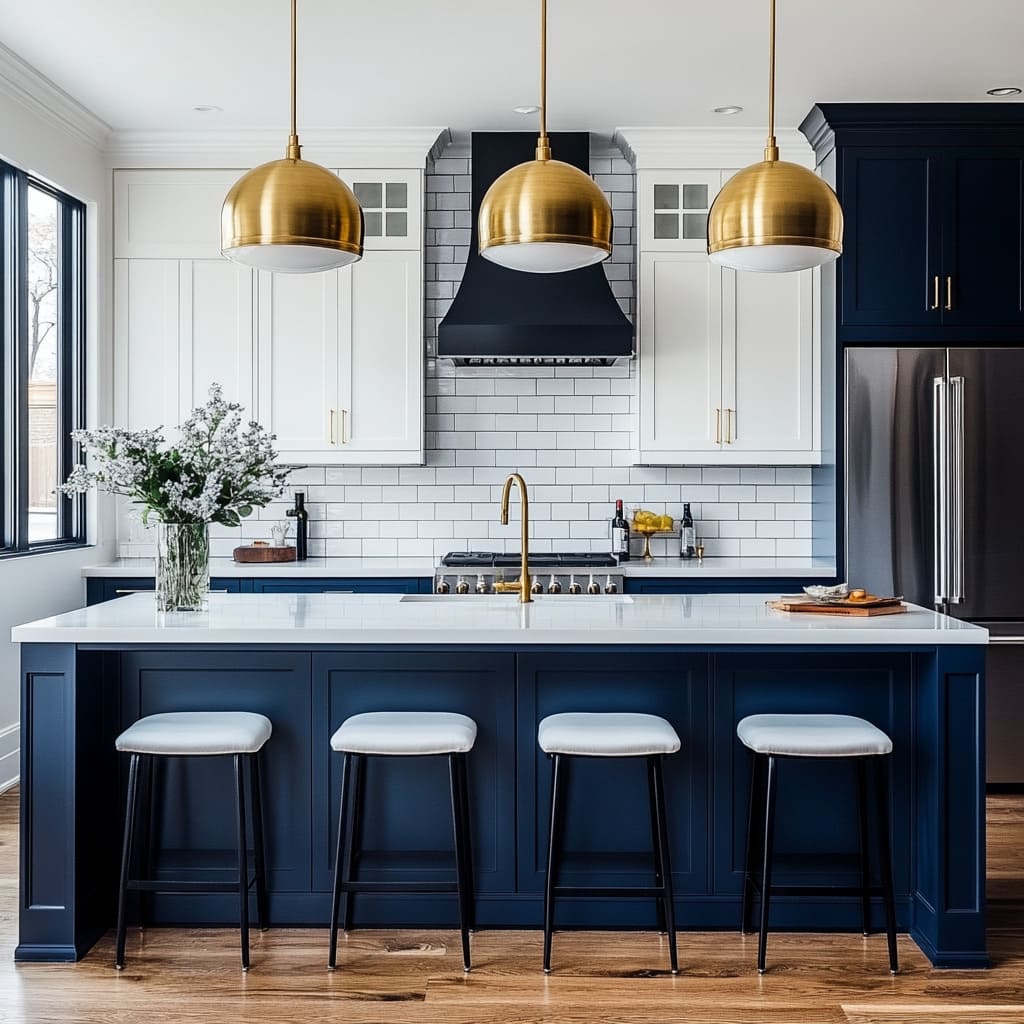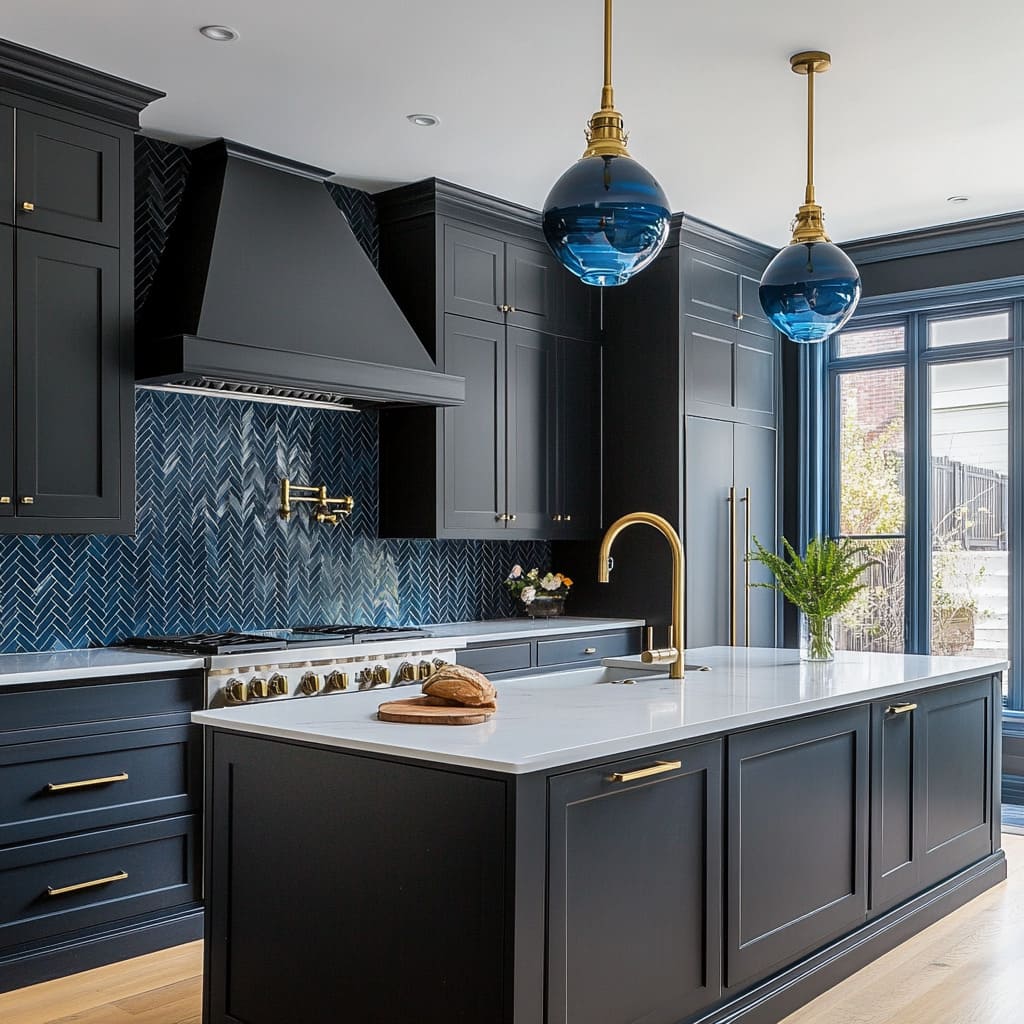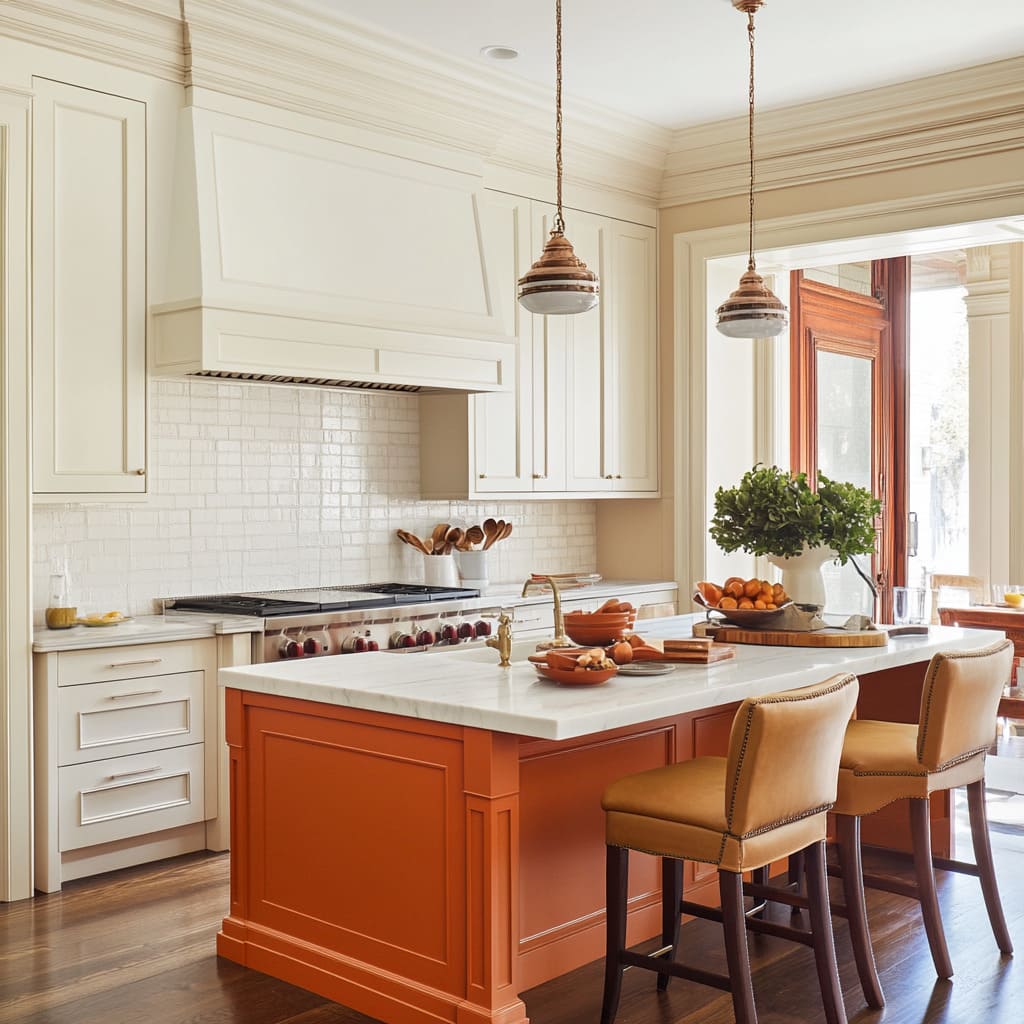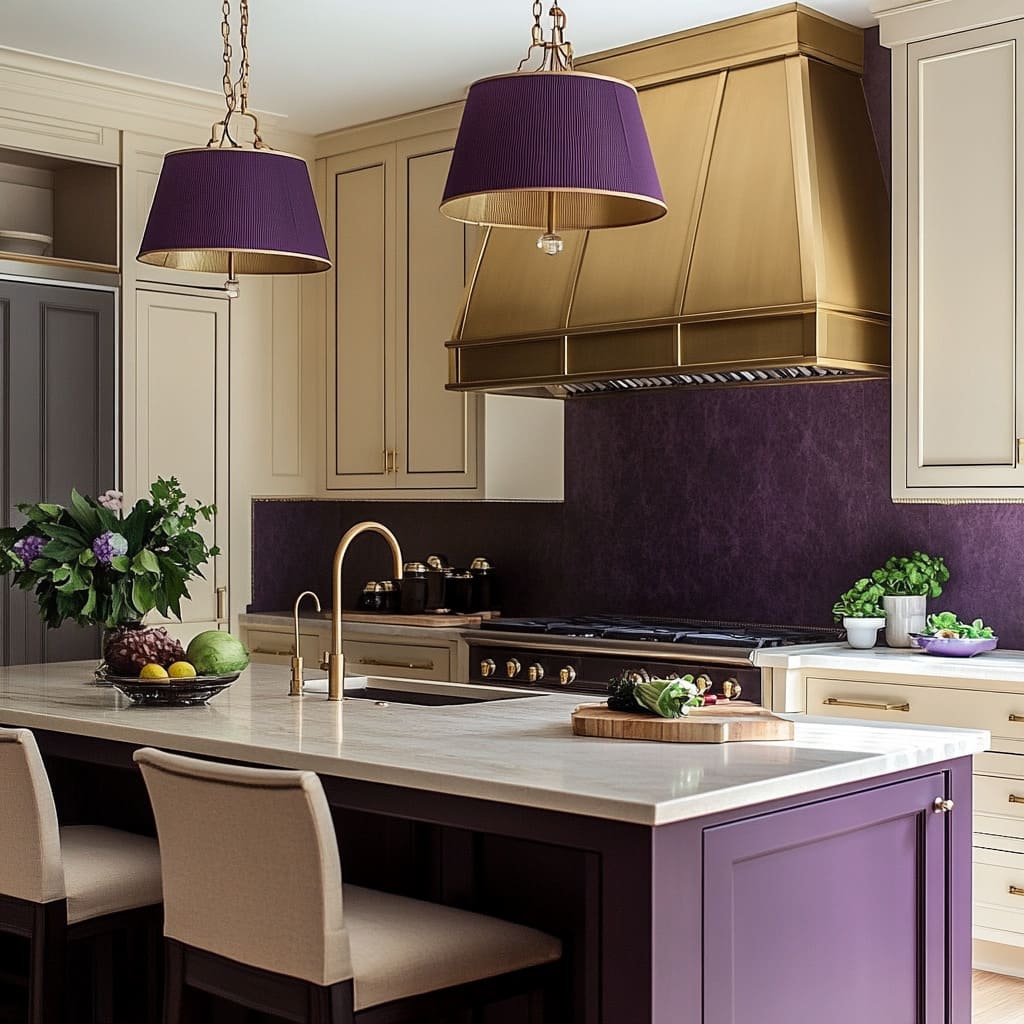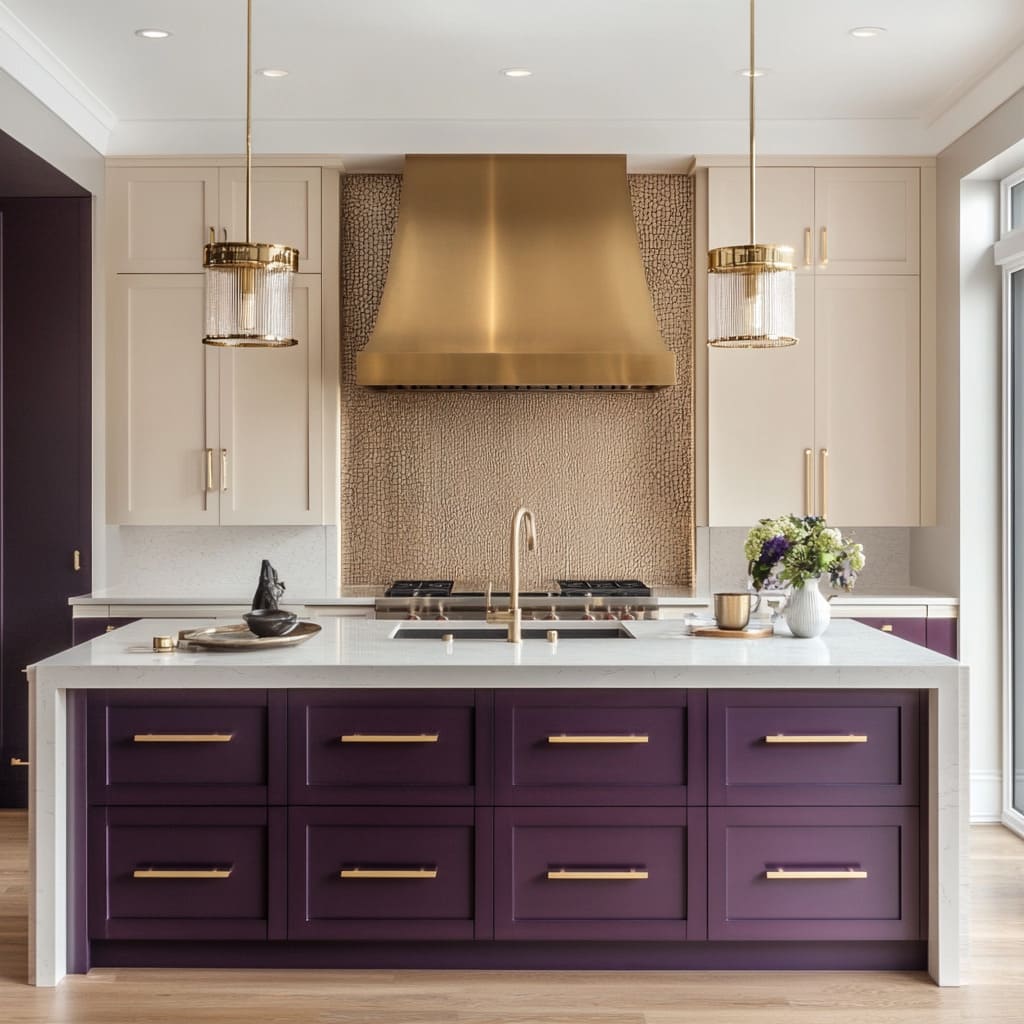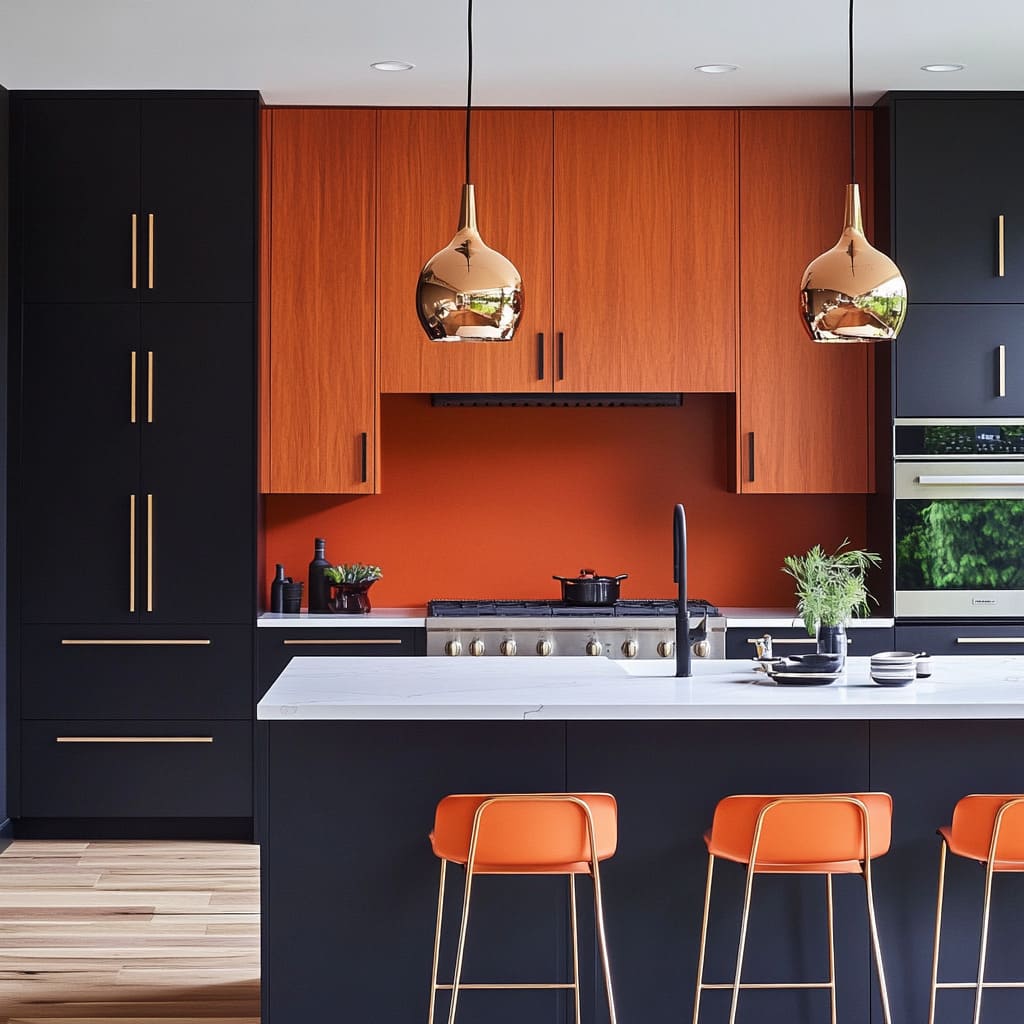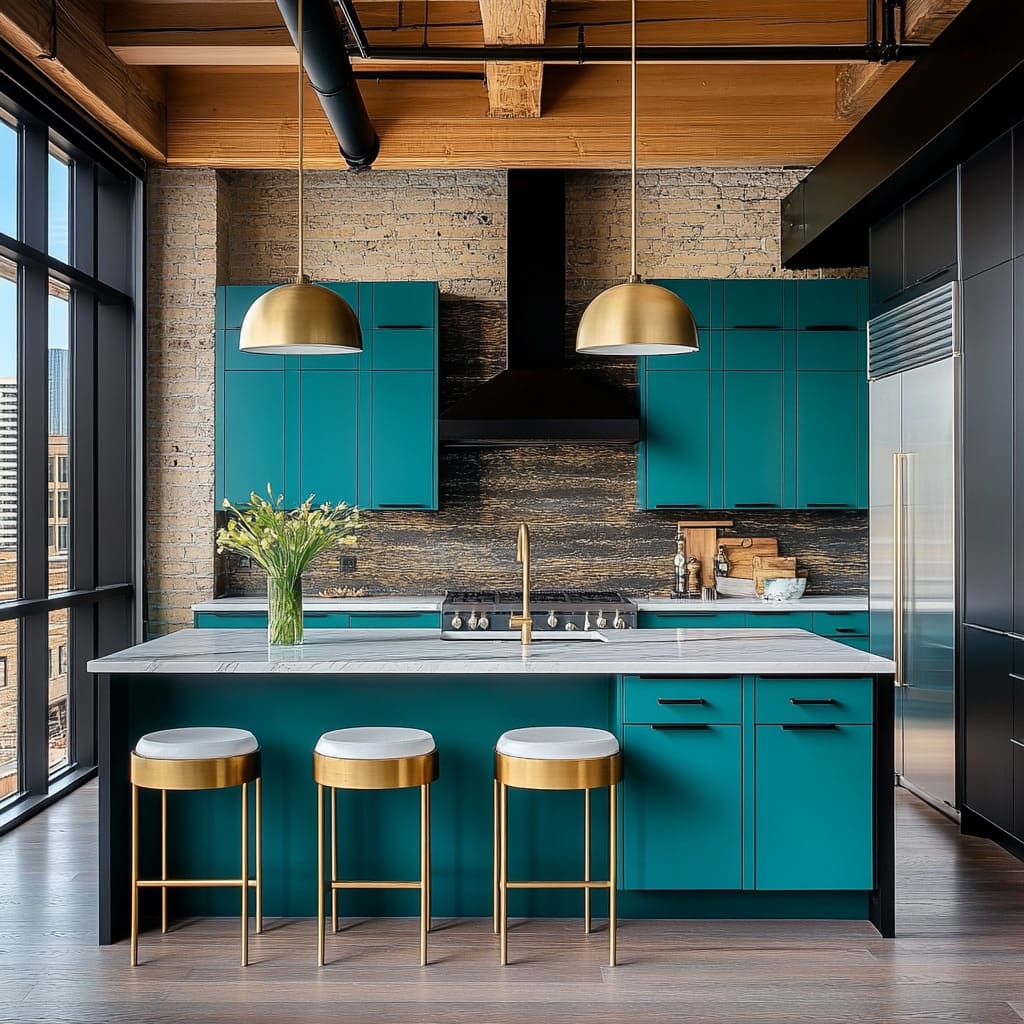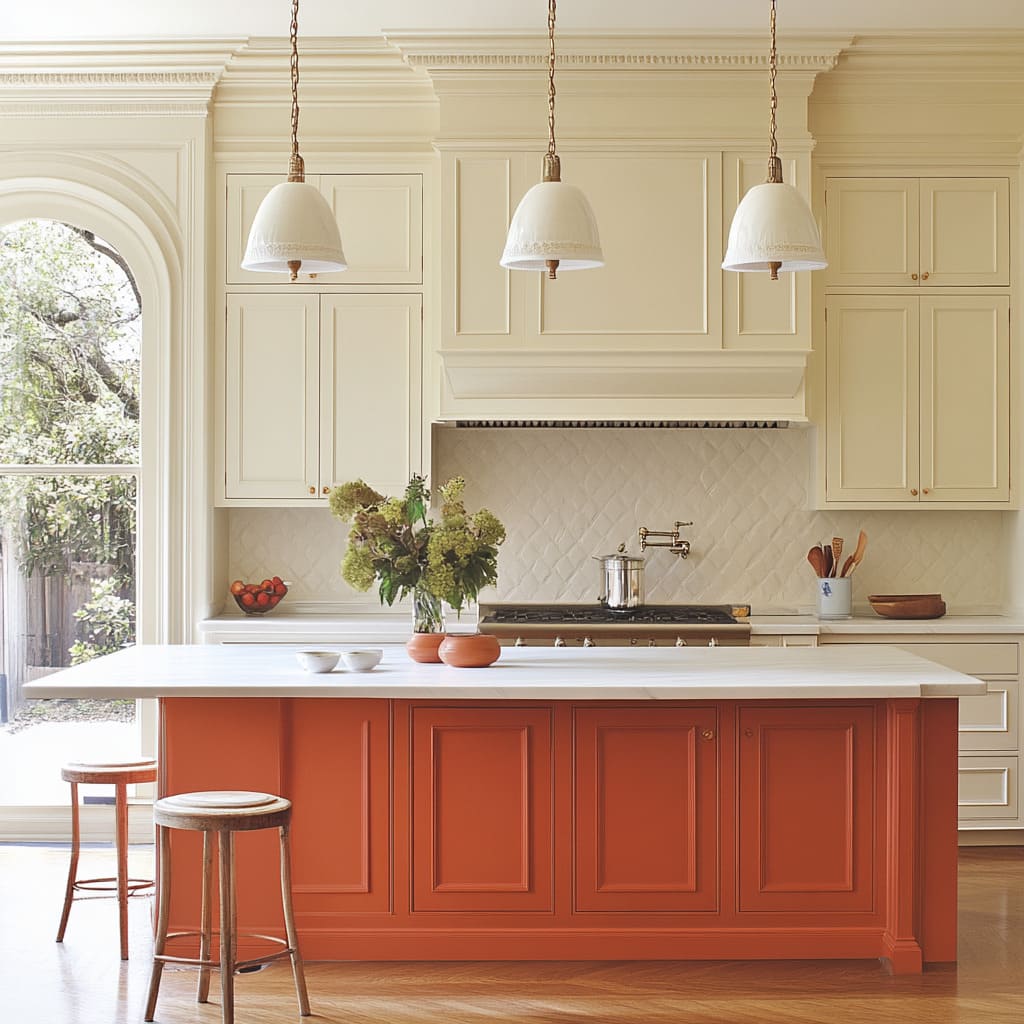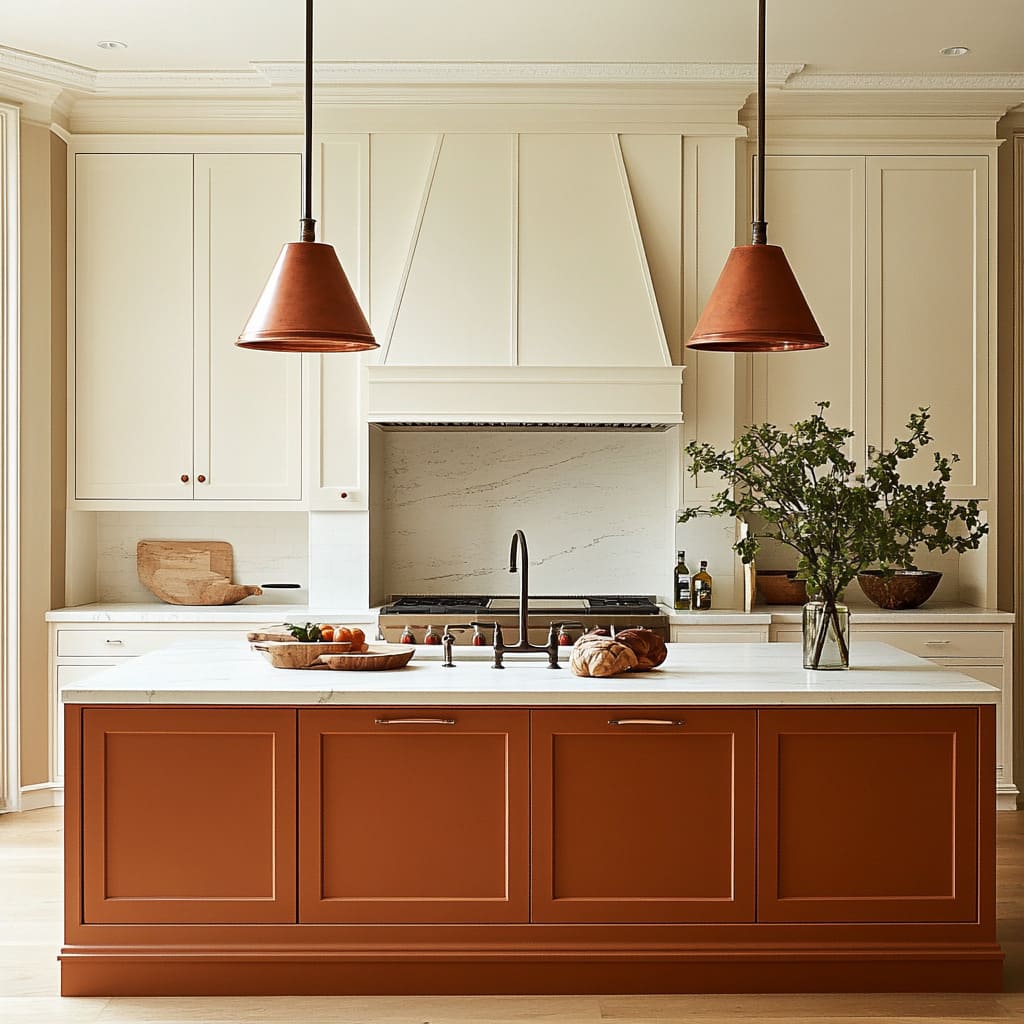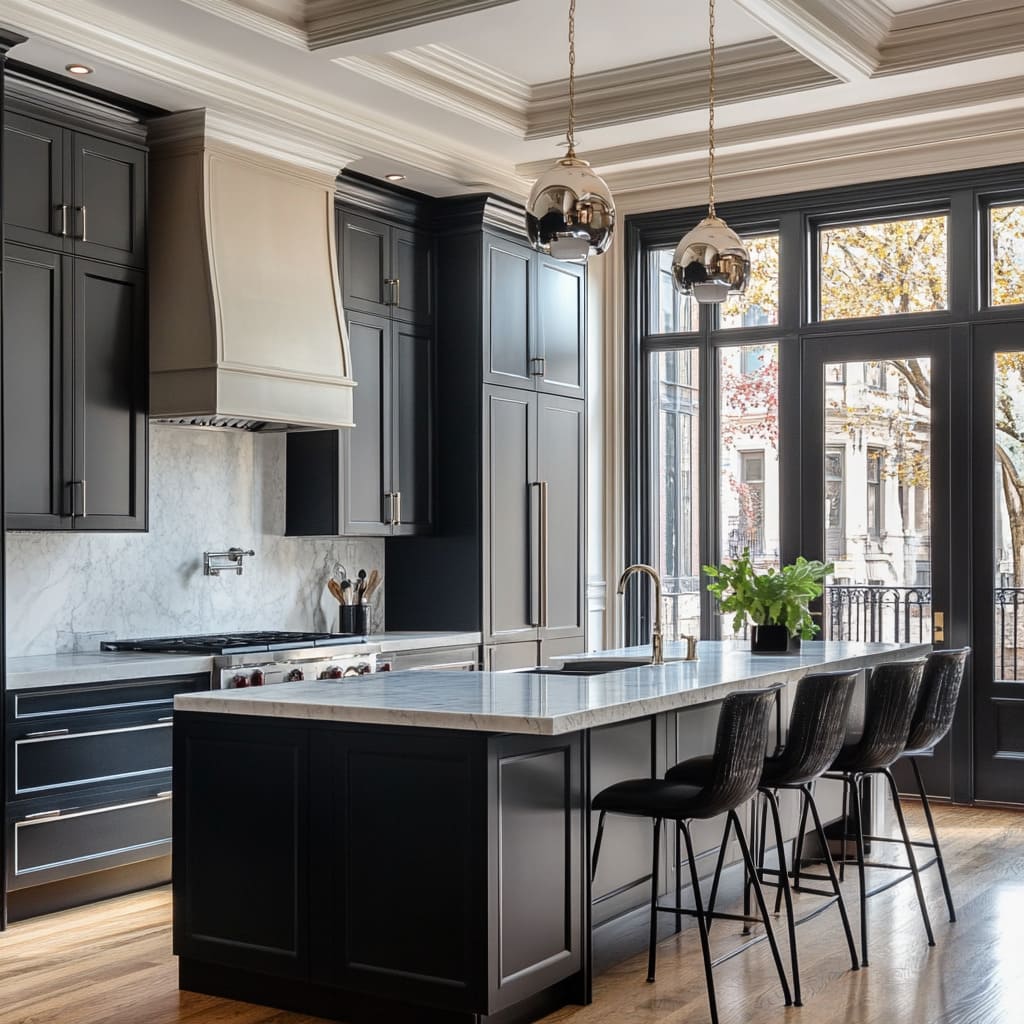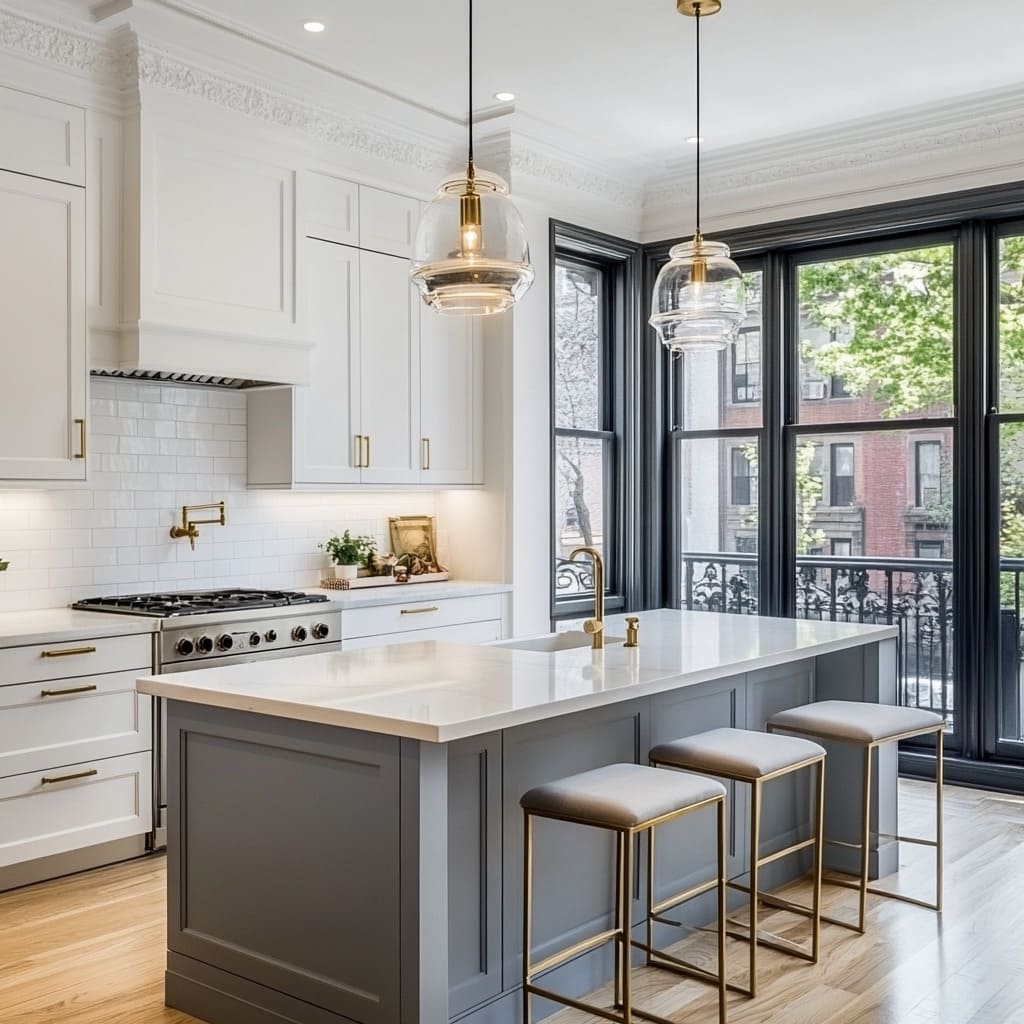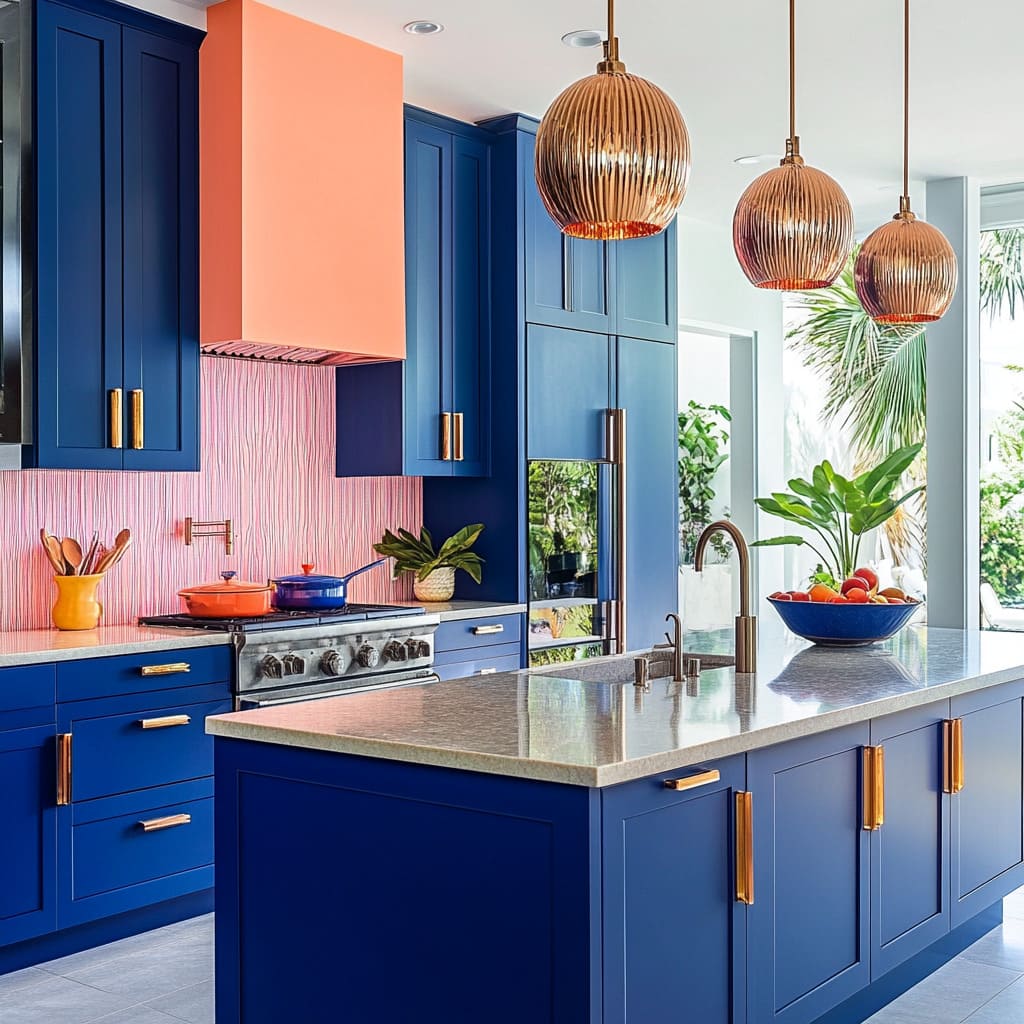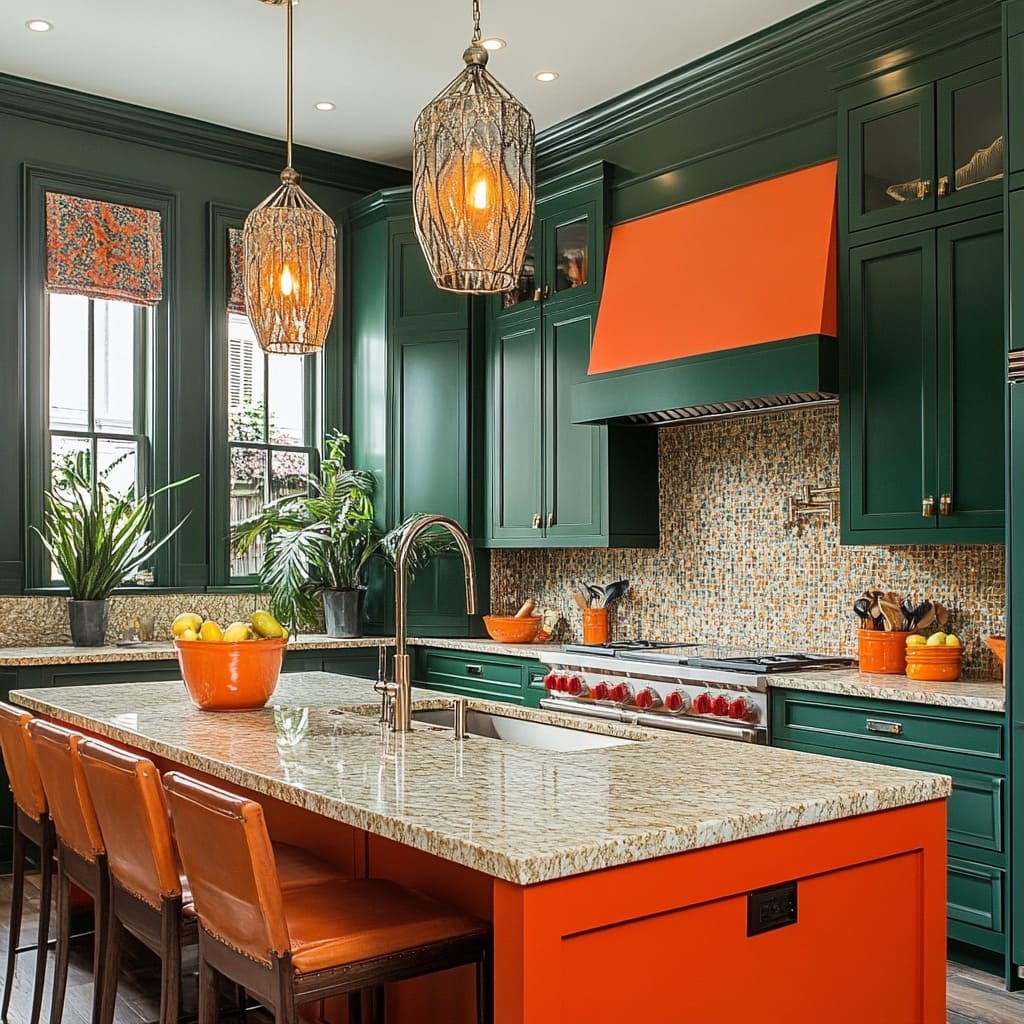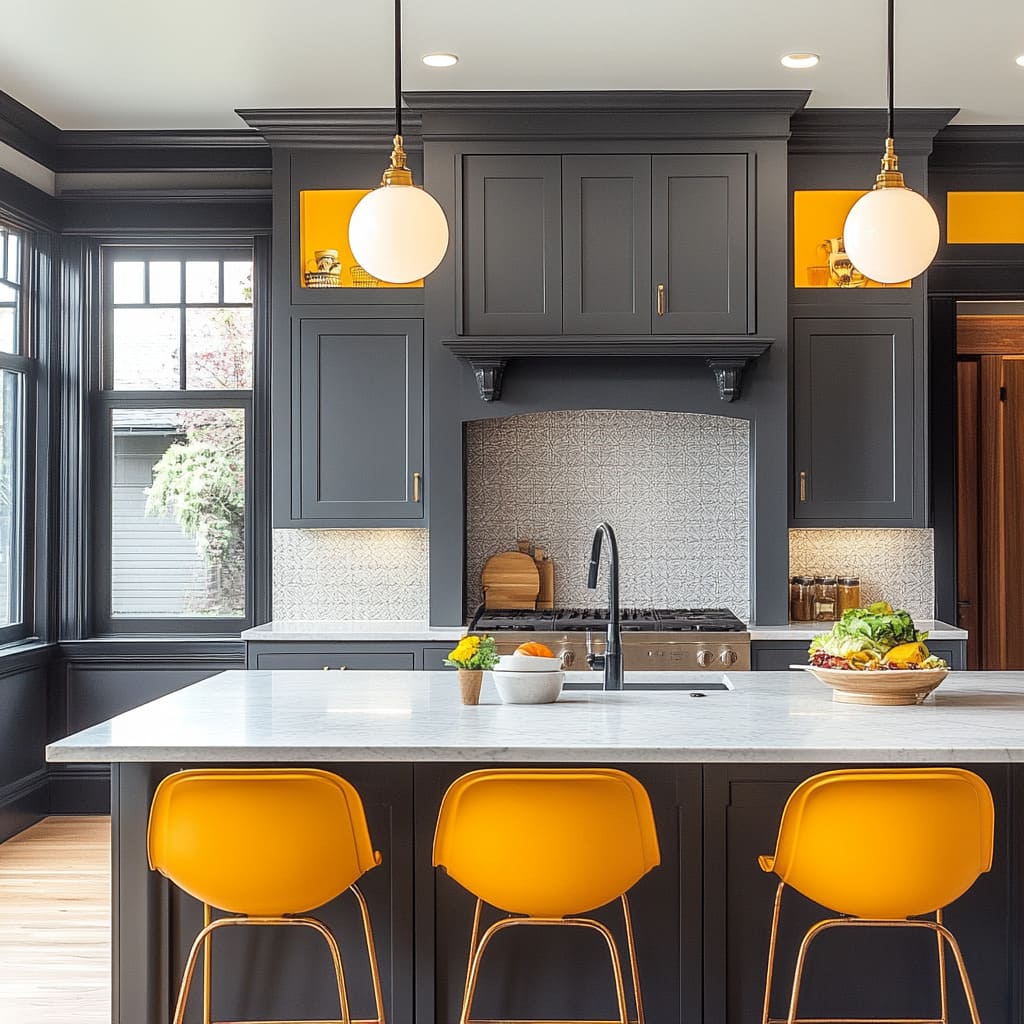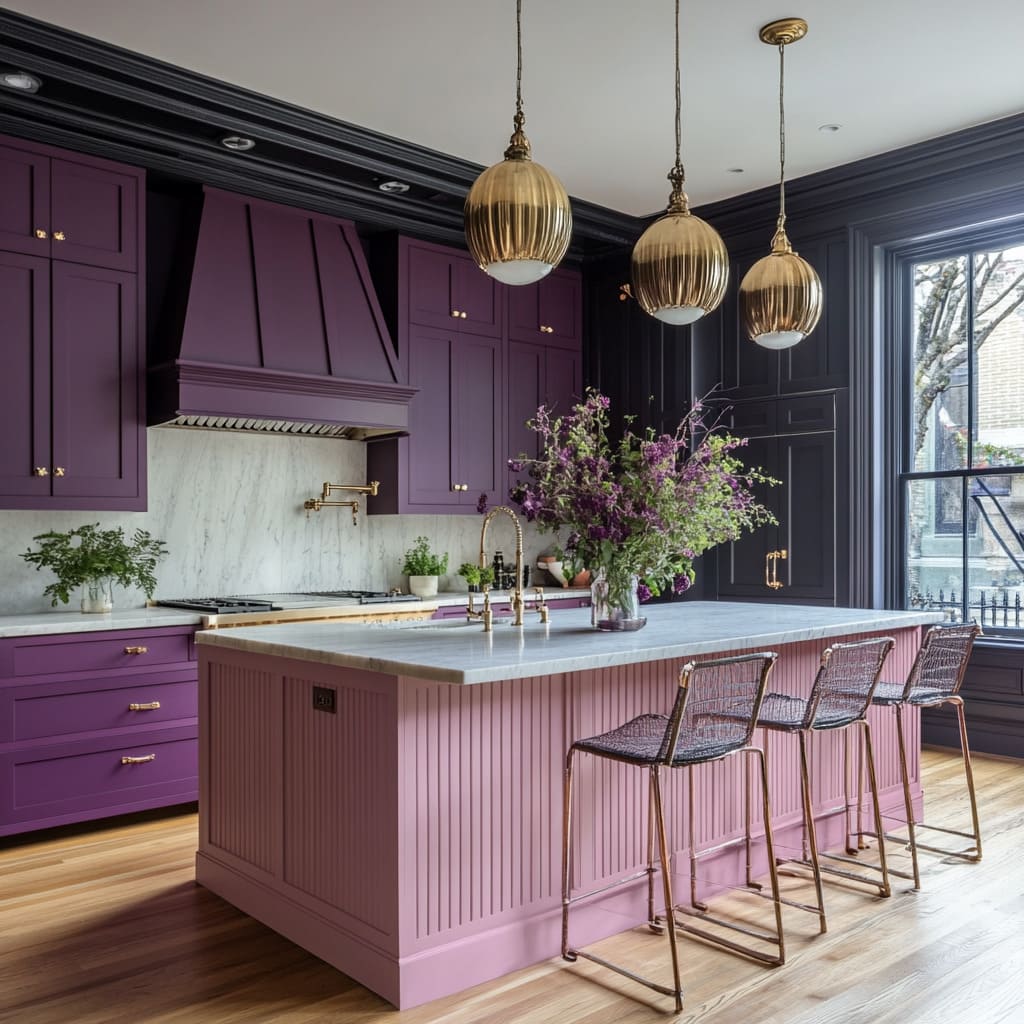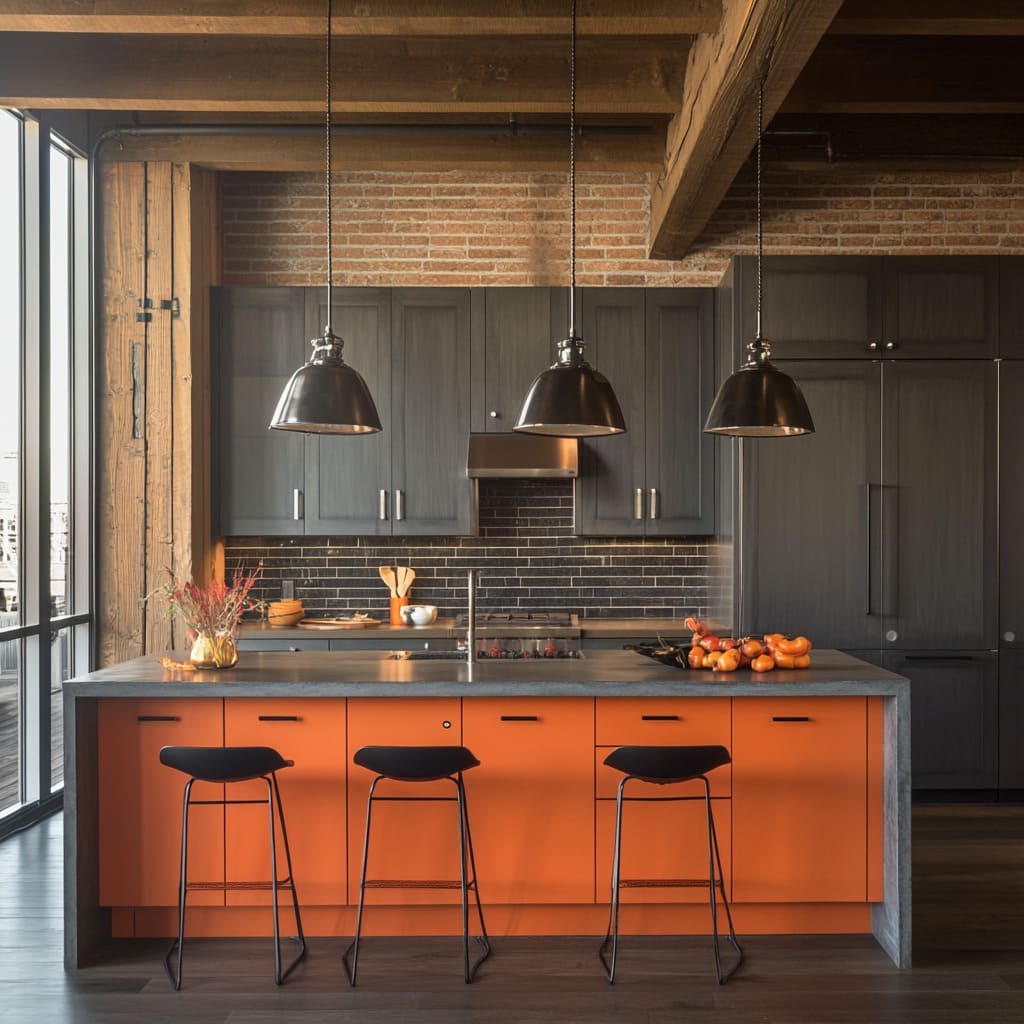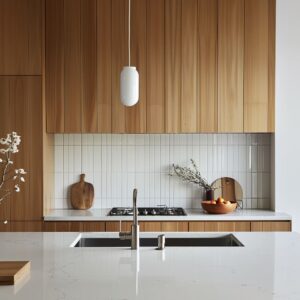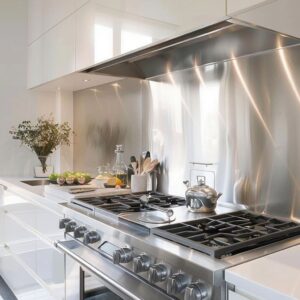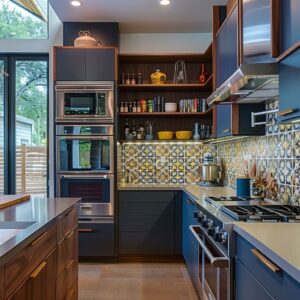The colors you choose for your kitchen cabinets can redefine the entire atmosphere of your cooking space. Beyond just aesthetics, the right paint scheme can influence the mood, functionality, and overall experience in the kitchen.
Whether you’re aiming to create a warm and inviting environment or a sleek and modern one, kitchen cabinet paint schemes play a crucial role in achieving your desired look and feel. Color is a powerful tool in design, and when it comes to kitchens, it can transform a room from merely functional to truly inspiring.
Selecting the right colours to paint your kitchen isn’t just about following trends; it’s about reflecting your personality and how you want to feel in your space. From vibrant hues that energize to calming shades that create a relaxed setting, the colors on your cabinets set the tone for the entire room.
Warm tones like burnt orange or terracotta bring an energetic and welcoming feel. These colors are perfect for kitchens where people gather and socialize, creating a lively and inviting atmosphere.
On the other hand, cool tones such as slate gray or sage green offer a more subdued, sophisticated ambiance. These shades work well in kitchens where you want to evoke a sense of calm and order, making them ideal for a space that’s not only for cooking but also for unwinding after a long day.
Understanding how different colors influence mood and behavior is essential when planning your kitchen redesign. It’s not just about choosing what looks good but also about how the colors make you feel when you’re in the space.
For instance, a kitchen with bold kitchen cabinet and wood floor color combinations can feel modern and dynamic, whereas a kitchen featuring neutral tones paired with a pop of color can strike the perfect balance between lively and serene
Understanding the Impact of Color in Kitchen Design
Color Psychology in the Kitchen
Color psychology is an important consideration in any interior design project, especially in a kitchen where the environment needs to be both functional and pleasant. The colors you select can influence not only the look of your kitchen but also the way it feels and functions on a daily basis.
Warm tones such as burnt orange and terracotta are excellent for creating an environment that feels inviting and energetic. These colors are particularly effective in kitchens that are the heart of the home, where families gather for meals and conversations.
The warmth of these shades brings a sense of coziness and comfort, making the kitchen a place where people want to linger.
In contrast, cooler tones like slate gray and sage green offer a different kind of appeal. These colors are ideal for those who prefer a calm and composed environment in their kitchen.
Slate gray brings a sleek, modern touch to the space, while sage green introduces an element of nature, fostering a peaceful and harmonious atmosphere. Both of these shades are perfect for kitchens that serve as a retreat from the chaos of daily life.
Color Combinations and Their Effects:
The way colors are combined in a kitchen can have a profound effect on the overall design. Bold and neutral color pairings are a popular choice for those looking to create a balanced and visually interesting space.
For example, combining burnt orange with slate gray can create a dynamic contrast that highlights both the warmth of the orange and the coolness of the gray. This combination is ideal for those who want to add a modern twist to traditional kitchen colours ideas.
Another effective pairing is deep purple with soft pink. This combination brings a touch of luxury and sophistication to the kitchen, with the deep purple adding richness and the soft pink providing a gentle contrast.
This is a great option for those who want to create a kitchen that feels both bold and elegant.
When considering kitchen cabinet paint schemes, it’s important to think about how different colors will interact with the other elements in the room, such as the countertops, backsplash, and flooring. For example, the kitchen cabinet and wood floor color combinations can either complement each other for a cohesive look or contrast to make a bold statement.
In any kitchen, the colors chosen for the cabinets will have a lasting impact on the overall design. Whether you opt for a warm, inviting palette or a cool, sophisticated one, the key is to choose colors that not only look good but also make you feel at home in your cooking space.
With the right paint scheme, your kitchen can be transformed into a space that is not only functional but also a true reflection of your style and personality
See What You Can Achieve with Your Budget
Check what amazing kitchen color makeovers are possible within your budget using our renovation calculator.
[budget_renovation_calculator]
Classic Neutral Palettes with a Modern Twist
Timeless White Cabinets:
White cabinets have long been a favorite in kitchen design, offering a sense of cleanliness, brightness, and simplicity that is hard to beat. The appeal of white cabinets lies in their versatility and ability to fit seamlessly into various kitchen styles, from traditional to contemporary.
A kitchen color scheme with white cabinets can instantly make a space feel more open and airy, creating an illusion of a larger room even in smaller kitchens
The beauty of white cabinets is that they act as a blank canvas, allowing you to experiment with different accents and finishes to achieve the desired look. For instance, pairing white cabinets with bold brass hardware can add a touch of luxury and warmth to the space.
The gold tones of the brass stand out beautifully against the crisp white, providing a sophisticated contrast that elevates the overall design. In addition to brass, other bold accents can be introduced to complement white cabinets, such as a colorful backsplash.
A vibrant backsplash, whether in a deep blue, emerald green, or even a burnt orange kitchen color scheme, can bring a pop of color to an otherwise neutral kitchen. This combination not only adds visual interest but also creates a focal point that draws the eye, making the kitchen feel both modern and personalized
Moreover, white cabinets pair exceptionally well with a variety of kitchen cabinet countertop color combinations. Whether you opt for a sleek black granite, a warm wood countertop, or a light marble, the contrast or harmony between the white cabinets and the countertop material can significantly impact the kitchen’s overall aesthetic.
This adaptability makes white cabinets a timeless choice that can be updated with simple changes in accents or accessories
Subtle Hues: Soft Sage Greens and Creamy Beiges
While white cabinets offer a classic look, subtle hues like soft sage greens and creamy beiges provide an equally inviting alternative. These muted, earthy tones introduce a sense of calm and warmth into the kitchen, making it feel like a cozy retreat within the home.
Soft sage green, in particular, has become a popular choice for those looking to add a touch of nature and serenity to their kitchen. This gentle green pairs beautifully with natural light, enhancing its calming effect.
When combined with warm metal finishes like brushed gold or antique bronze, sage green cabinets create a harmonious balance between modern and traditional elements. The metal accents add just enough contrast to keep the design interesting without overpowering the subtlety of the green
Creamy beiges, on the other hand, offer a timeless and versatile option for kitchen units. These tones are warm and inviting, creating a neutral backdrop that allows other design elements to shine.
Beige cabinets can be paired with a variety of materials and finishes, making them a flexible choice for different kitchen styles. For example, pairing creamy beige cabinets with a natural wood floor and cabinet combination can create a cohesive, organic feel that is both modern and classic.
Both sage green and creamy beige are perfect for those who prefer a more subdued and relaxing kitchen atmosphere. These colors work well with a range of kitchen cabinet countertop color combinations, whether you choose a cool marble, a warm wood, or a patterned tile.
The result is a kitchen that feels comfortable and welcoming, with a touch of understated elegance.
Bold and Vibrant Cabinet Colors for a Dynamic Kitchen
Making a Statement with Burnt Orange
For those who want to make a bold statement, a burnt orange kitchen color scheme offers an exciting and energetic option. Burnt orange is a color that exudes warmth and vibrancy, making it an ideal choice for homeowners who want their kitchen to feel lively and inviting.
This color can instantly transform a kitchen into a dynamic space, full of personality and style
Burnt orange cabinets work particularly well in kitchens with industrial or modern design elements. When paired with materials like dark slate or concrete countertops, the orange provides a striking contrast that draws attention to the cabinetry.
The glossy finish often used on burnt orange cabinets enhances their boldness, reflecting light and making the color even more vivid. This combination creates a focal point that is both stylish and functional, perfect for a kitchen that serves as the heart of the home.
Additionally, burnt orange pairs well with darker tones such as charcoal gray or deep brown, creating a balanced and cohesive look. This color combination is ideal for those who want to add warmth to their kitchen without overwhelming the space.
The dark tones ground the vibrant orange, while the orange adds a lively touch to the overall design.
Rich and Deep Tones: Purples, Grays, and More
Rich, deep tones like purples and grays are perfect for creating a luxurious and sophisticated kitchen. These colors bring depth and elegance to the space, making them an excellent choice for those who want their kitchen to feel both modern and upscale.
Deep purple cabinets, for instance, can add a regal touch to the kitchen, especially when paired with lighter or neutral tones. This color works well in combination with soft pinks, creamy whites, or even metallic finishes like gold or brass.
The result is a kitchen that feels opulent yet contemporary, with a color scheme that is both unique and timeless.
Slate gray is another excellent choice for a sophisticated kitchen. This color is versatile and can be paired with a wide range of other tones, from crisp whites to warm wood finishes.
Gray cabinets bring a sense of calm and balance to the kitchen, making them ideal for those who prefer a more understated yet stylish space. When combined with lighter countertops or backsplashes, gray cabinets create a beautiful contrast that adds depth and interest to the kitchen.
These rich tones also pair well with a variety of kitchen unit colour combinations, allowing you to create a customized look that suits your personal style. Whether you choose a deep, moody purple or a sleek, modern gray, these colors add a level of sophistication and depth to your kitchen that is both striking and refined.
In conclusion, choosing the right kitchen cabinet color can have a profound impact on the overall design and feel of your kitchen. Whether you prefer the timeless elegance of white cabinets, the calming nature of soft greens and beiges, or the bold statement of burnt orange and deep purples, the key is to select colors that not only reflect your style but also enhance the functionality and ambiance of your kitchen.
With the right color scheme, your kitchen can become a space that is both beautiful and inviting, a true reflection of your personality and taste
The Role of Finish Combinations in Enhancing Cabinet Colors
Matte vs. Glossy Finishes
When selecting a kitchen colour design, the finish you choose for your cabinets can be just as important as the color itself.
Matte and glossy finishes offer distinctly different looks and can dramatically alter the overall feel of your kitchen.
Matte finishes have a subtle elegance, creating a soft, understated look that doesn’t overpower the room. This type of finish is excellent for creating a calm and refined atmosphere, as it doesn’t reflect much light and therefore feels more grounded.
Matte finishes are ideal for contemporary or minimalist kitchens where simplicity is key, allowing the color itself to take center stage without the distraction of shine. They work particularly well with muted colors like soft sage or deep gray, where the lack of reflection enhances the depth and richness of the color.
On the other hand, glossy finishes bring a touch of luxury and modernity to the kitchen. Their highly reflective surface catches and plays with light, which can make a smaller kitchen feel more spacious and bright.
Glossy finishes are perfect for bold colors, such as a deep navy or burnt orange, as they amplify the vibrancy of the hue and create a striking visual impact. This reflective quality also makes glossy cabinets a great choice in modern kitchen color schemes, where the goal is often to create a sleek, polished look.
The choice between matte and glossy finishes should align with the overall kitchen color palette and the atmosphere you wish to create. While matte finishes lend themselves to a more subdued, sophisticated environment, glossy finishes are ideal for kitchens that embrace bold, modern aesthetics.
Textural Play: Integrating Different Materials
Incorporating different textures within your kitchen can add interest and dimension, making the space feel layered and thoughtfully designed. Combining various finishes, such as matte cabinetry with polished countertops, introduces contrast that enhances the overall kitchen color combinations.
For example, pairing matte cabinetry with a polished stone countertop can create a visually appealing balance. The matte surface provides a soft, muted backdrop, allowing the polished countertop to stand out with its glossy, reflective finish.
This interplay between different textures is crucial in kitchens where the design aims to be both functional and aesthetically pleasing
Additionally, the use of varied materials, like integrating wood elements alongside metal fixtures, can further elevate the kitchen’s design. Wood brings warmth and natural texture, while metal adds a sleek, contemporary edge.
This combination is particularly effective in transitional kitchens that blend modern and traditional elements. The key is to select textures that complement the kitchen’s color and style, ensuring that the finishes work together to create a cohesive look.
The finishes you choose also set the tone for the kitchen’s style. For a modern, sleek look, a high-gloss finish combined with smooth, reflective surfaces might be ideal.
In contrast, a traditional kitchen might benefit from the soft texture of matte finishes paired with more rustic materials like wood or stone. Understanding how these textures interact with your chosen colors can help create a kitchen that is not only beautiful but also feels complete and well thought out.
Balancing Bold Colors with Neutral Tones
The Art of Contrast
One of the most effective ways to create a visually appealing kitchen is through the balance of bold colors with neutral tones. This technique ensures that the kitchen feels vibrant and dynamic without being overwhelming.
By carefully selecting kitchen color combinations, you can highlight specific features while maintaining a harmonious overall look. For instance, pairing a bold color like burnt orange with a neutral slate gray can create a kitchen that feels both lively and balanced.
The gray tones provide a neutral canvas that allows the orange to stand out, creating a striking contrast that is eye-catching but not overpowering. This combination works particularly well in kitchens where you want to introduce color without it dominating the space
Another successful approach is to pair deep, rich tones like purple or navy with softer, lighter hues such as blush pink or off-white. These kitchen cabinets color combination ideas create a layered effect, where the deeper tones add depth and richness, while the lighter tones keep the space feeling open and airy.
This balance is essential in ensuring that the kitchen doesn’t feel too heavy or dark, especially in spaces that might not benefit from ample natural light.
Creating Visual Interest through Color Blocking
Color blocking is a design technique that involves using solid blocks of color to define different areas within a space. This method can be particularly effective in kitchens, where different zones like the cooking area, island, and seating area can be highlighted with distinct colors.
For example, you might choose a bold color for the kitchen island, such as a vibrant teal or a warm mustard, while keeping the surrounding cabinets in a neutral shade like gray or beige. This creates a focal point in the kitchen, drawing attention to the island and making it the center of activity.
The surrounding neutral tones ensure that the bold color doesn’t overwhelm the space but instead adds a pop of interest
Another approach is to use a two-tone kitchen cabinet scheme, where the upper cabinets are painted in a lighter shade and the lower cabinets in a darker, contrasting color. This not only adds visual interest but also helps to ground the kitchen, making it feel more balanced and well-proportioned.
The contrast between the two tones creates a dynamic look that is both modern and stylish, fitting well into contemporary kitchen designs.
Integrating Light to Enhance Cabinet Colors
Natural Light and Color Interaction
The way natural light interacts with your kitchen cabinets can significantly influence the perception of color. Large windows or skylights that allow ample natural light into the kitchen can enhance the colors, making them appear more vibrant and lively.
This is particularly beneficial for kitchens with bold or dark colors, as the light can soften the intensity of the colors and make the space feel more open.
For example, a kitchen with dark slate gray cabinets can benefit greatly from natural light, which can highlight the subtle undertones in the gray and prevent the kitchen from feeling too dark or closed in. Similarly, a kitchen with a bold, burnt orange color scheme can appear even more dynamic when bathed in sunlight, with the light bringing out the warmth and energy of the color.
When planning your kitchen color combinations, it’s essential to consider how natural light will affect the colors throughout the day. Colors can look different in morning light compared to the evening, so choosing a color that looks appealing in various lighting conditions is key to creating a kitchen that feels right at any time of day.
Artificial Lighting for Depth and Warmth
In addition to natural light, artificial lighting plays a crucial role in enhancing kitchen colors and finishes. The right lighting can add depth and warmth to the space, highlighting specific areas and creating a welcoming atmosphere.
Pendant lights, for example, are not only functional but also serve as a design element that can complement your kitchen’s color palette. Whether you choose warm-toned metal pendants to add a touch of warmth or sleek, modern fixtures to emphasize a contemporary design, lighting can significantly impact the overall feel of your kitchen.
Under-cabinet lighting is another effective way to showcase your kitchen cabinets and countertops. This type of lighting illuminates the workspace, making it easier to see what you’re doing while also highlighting the colors and textures of the materials.
Recessed lighting in the ceiling can provide general illumination, ensuring the entire kitchen is well-lit and the colors are consistently visible. The placement and style of light fixtures should be carefully considered to ensure they enhance, rather than detract from, the kitchen cabinets color combination.
Whether you’re working with a modern kitchen color scheme or a more traditional one, the right lighting can tie everything together, creating a cohesive and inviting space
Thinking about giving your kitchen a makeover? Wondering how much it might cost? Check out our cost calculator—it’s a super easy way to get a quick estimate.
Just pop in your project details, and you’ll get an idea of what you’re looking at to turn your kitchen dreams into reality
Finishing Touches: Hardware and Accessories
Choosing Hardware to Complement Your Color Scheme
When it comes to kitchen cabinet paint schemes, the choice of hardware is a crucial finishing touch that can enhance or contrast with your chosen colors. Hardware serves not only a functional purpose but also adds an element of style and personality to your kitchen.
Brass hardware, for instance, is an excellent choice for those looking to add a touch of luxury and warmth to their kitchen. Brass pairs beautifully with a wide range of kitchen colours ideas, especially in kitchens featuring neutral tones like white, beige, or sage green.
The warm, golden tones of brass can create a striking contrast against darker cabinets, such as navy or charcoal, adding a sophisticated edge to the space. In lighter kitchens, brass can enhance the overall warmth and create a cohesive look that feels both timeless and elegant.
Stainless steel hardware offers a more modern, sleek aesthetic, making it a popular choice in contemporary kitchens. Stainless steel’s cool, metallic finish complements a variety of kitchen color combos, from bold colors like deep blue or burnt orange to classic neutrals like gray or white.
This type of hardware works particularly well in kitchens that feature modern kitchen color schemes, where the goal is to create a streamlined and polished look. Stainless steel handles or knobs can add a sense of modernity and simplicity, perfect for those who prefer a minimalist design
Matte black hardware is another versatile option that can add depth and contrast to your kitchen. Black hardware is bold yet understated, making it a great choice for those who want to create a modern or industrial look.
It works well with almost any cabinet color, whether you’re working with lighter shades like white or cream or darker tones like deep green or plum. Matte black hardware adds a touch of sophistication without overpowering the space, making it ideal for kitchens where subtlety is key.
The choice of hardware should align with the overall kitchen paint schemes you’ve selected, ensuring that the finishes complement rather than clash with your cabinet colors. Whether you choose the warmth of brass, the sleekness of stainless steel, or the boldness of matte black, the right hardware can elevate your kitchen’s design, adding that final touch of refinement
Decorative Elements: Plants, Art, and More
Decorative elements play a significant role in tying together the color scheme of your kitchen, adding personality and character to the space. Thoughtfully chosen accessories can introduce additional colors and textures, bringing the entire design together in a cohesive and visually pleasing way.
Plants are a simple yet effective way to add life and color to your kitchen. A pop of green can break up a monochromatic kitchen color palette, introducing a natural element that feels fresh and inviting.
Whether it’s a potted herb on the windowsill or a larger plant in a corner, greenery can soften the look of your kitchen, adding a touch of warmth and vibrancy
Art is another powerful tool for enhancing your kitchen’s design. A well-chosen piece of artwork can introduce new colors or reflect the existing color scheme, adding depth and interest to the walls.
For example, if your kitchen features a bold cabinet color, you might choose artwork with complementary hues to tie the room together. On the other hand, if your kitchen’s palette is more neutral, a vibrant piece of art can serve as a focal point, adding a burst of color and personality
Vases, bowls, and other decorative items can also contribute to the overall aesthetic of your kitchen. These elements can introduce additional textures and finishes, such as ceramic, glass, or wood, adding layers to the design.
When selecting decorative pieces, consider how they interact with your kitchen cabinets color combination ideas. For instance, a ceramic vase in a bold color can contrast beautifully with neutral cabinets, while a wooden bowl might complement a more rustic or traditional kitchen design
These accessories not only enhance the kitchen’s visual appeal but also make it feel more lived-in and personal. By carefully selecting items that complement your kitchen color palette, you can create a space that is both functional and aesthetically pleasing.
Conclusion
Kitchen cabinet paint schemes have the power to transform your cooking space, making it a true reflection of your style and preferences. By experimenting with different colors, finishes, and hardware, you can breathe new life into your kitchen, creating a space that feels fresh, modern, and uniquely yours.
The right combination of colors and finishes can redefine your kitchen, making it a place where you enjoy spending time, whether you’re cooking, entertaining, or simply relaxing. From the best kitchen color combinations to thoughtful cabinet countertop combinations, the choices you make can have a lasting impact on the feel and functionality of your kitchen.
When choosing your kitchen’s color scheme, it’s important to consider both aesthetic preferences and practical needs. Think about how different colors will interact with your kitchen’s natural and artificial light, as well as how they will complement your overall home decor.
The goal is to create a kitchen that not only looks beautiful but also works for your lifestyle
If you’re unsure where to start or need inspiration, looking at kitchen cabinets color combination pictures can provide valuable ideas. Additionally, consulting with a professional designer can offer personalized advice and help you navigate the many options available.
By carefully considering your choices and paying attention to the details, you can create a kitchen that feels welcoming, stylish, and truly reflective of your personal taste.

